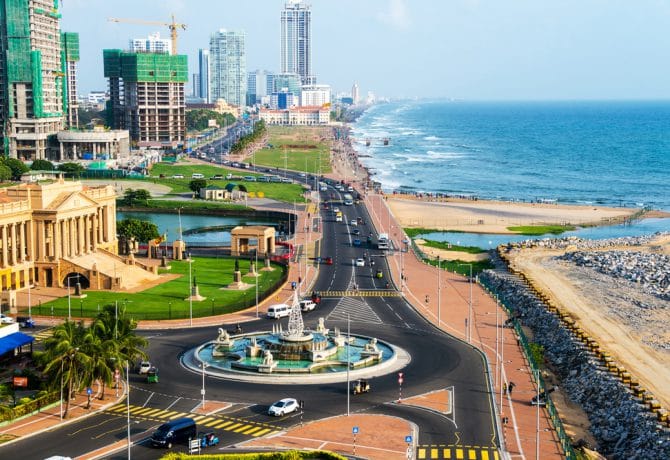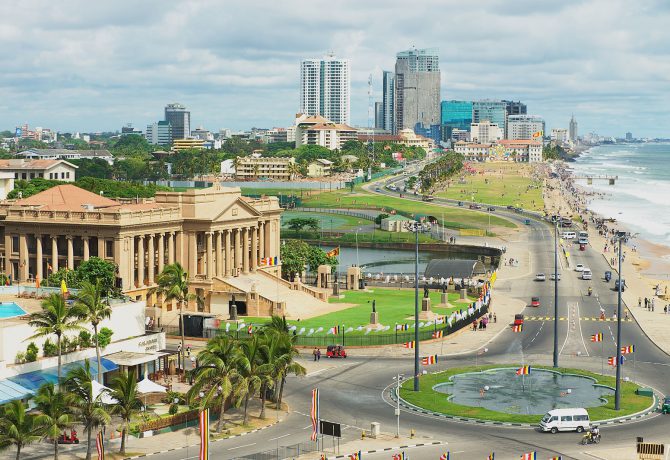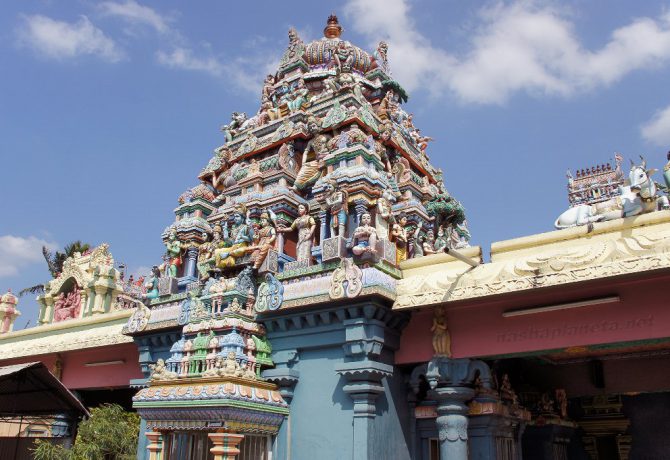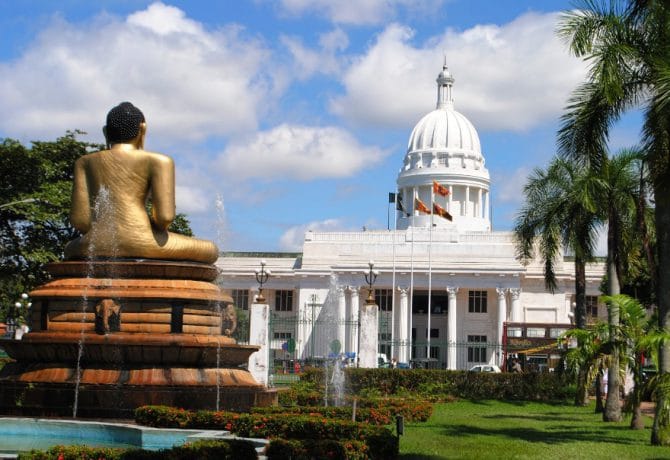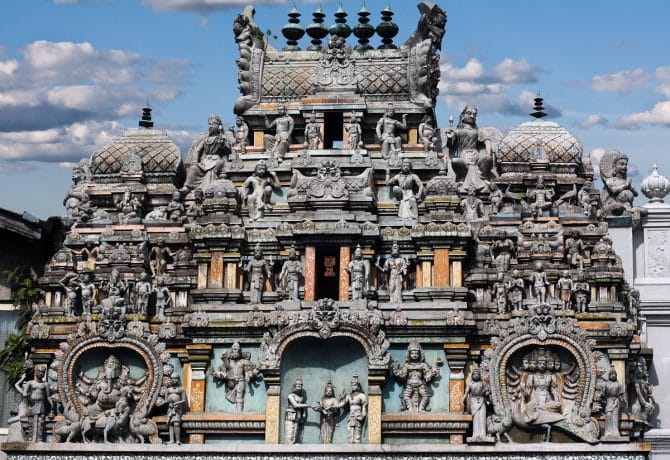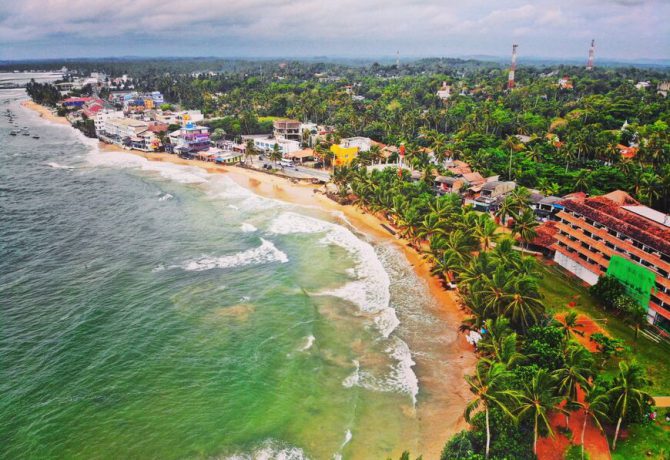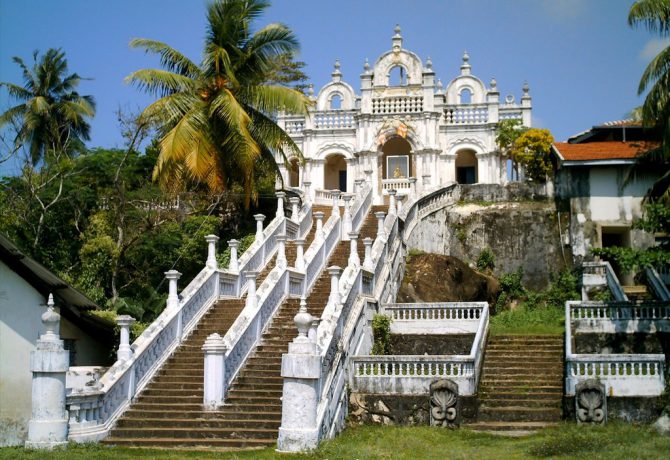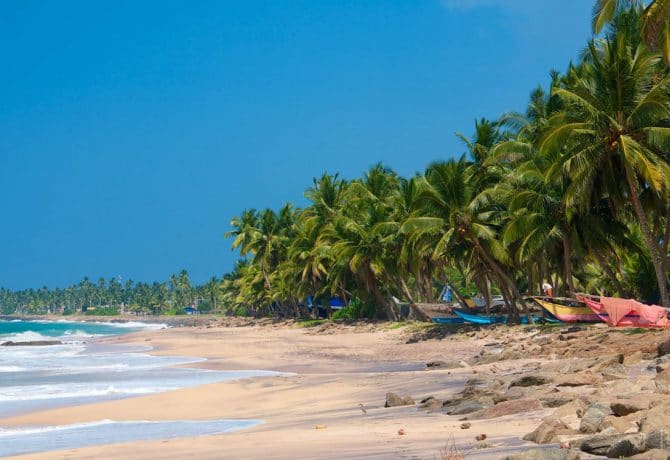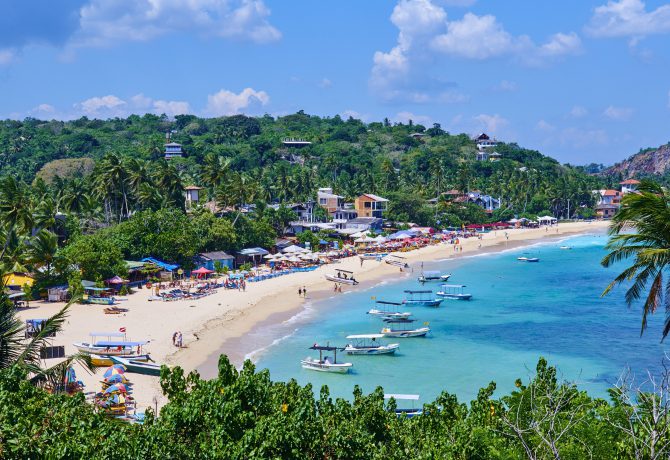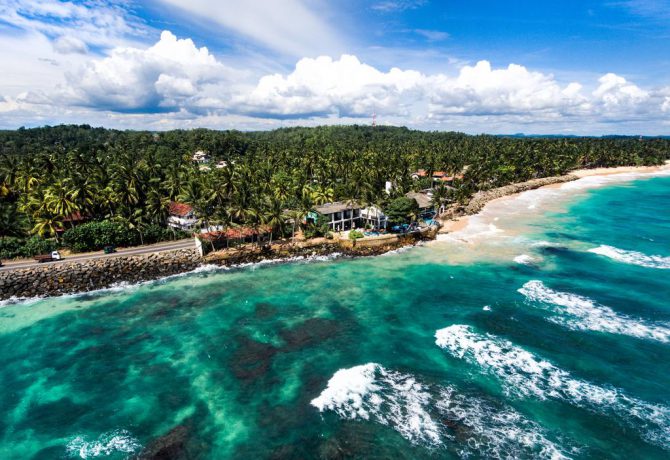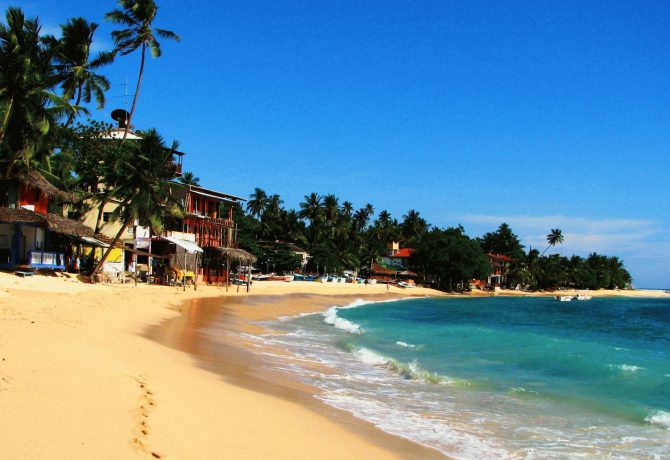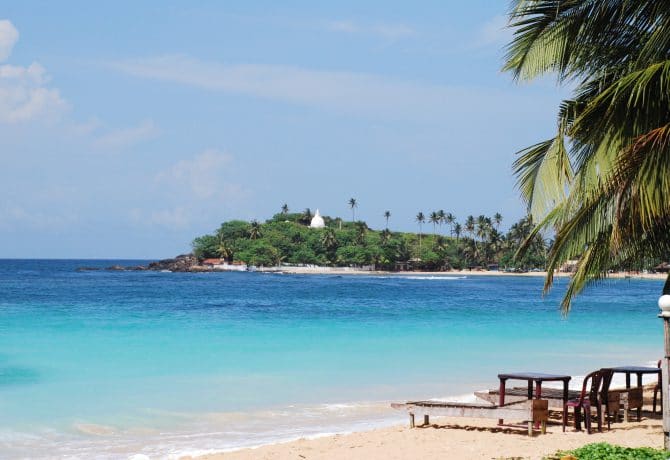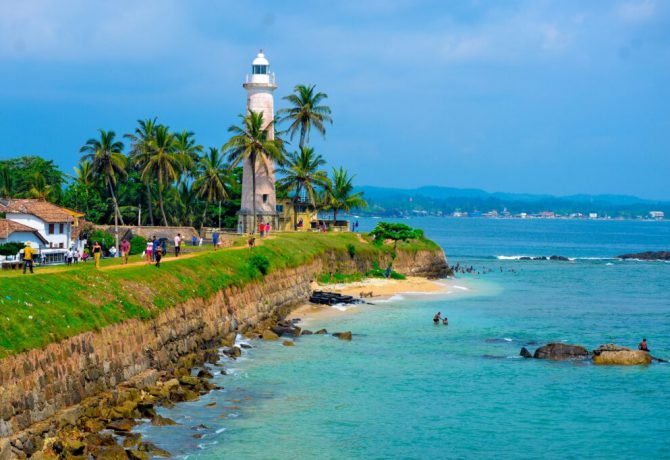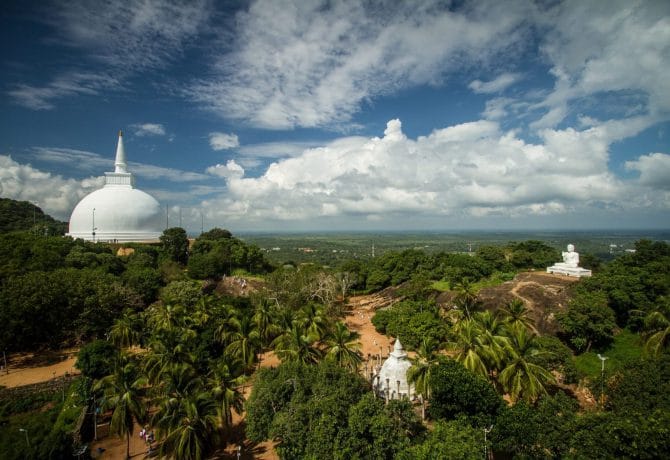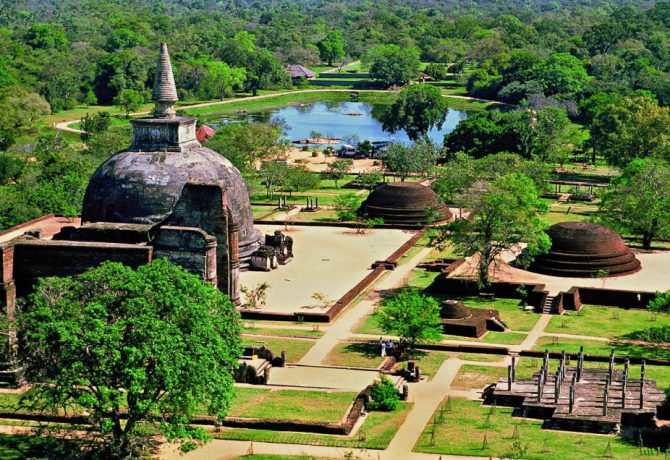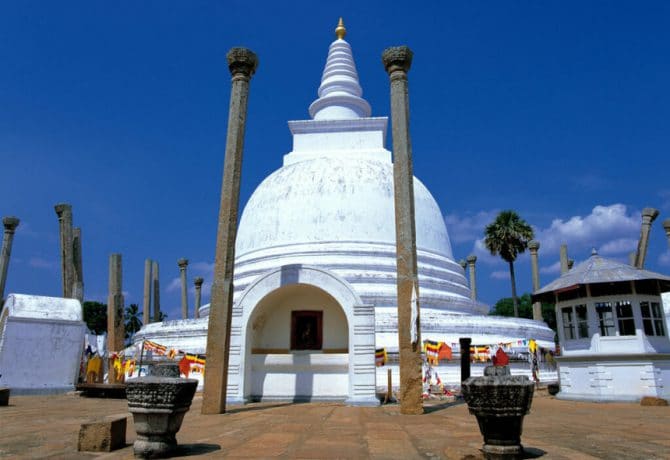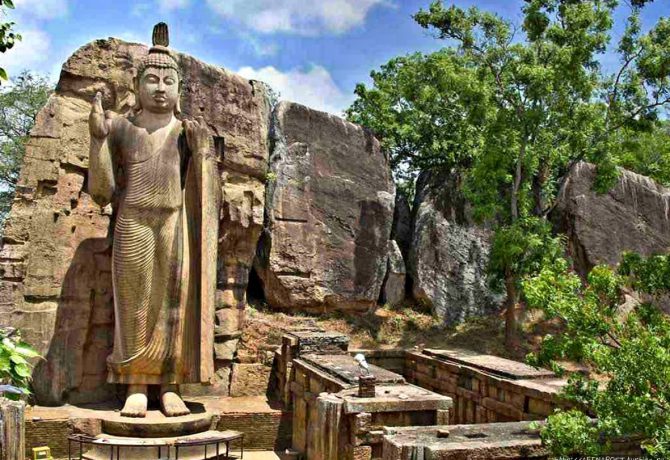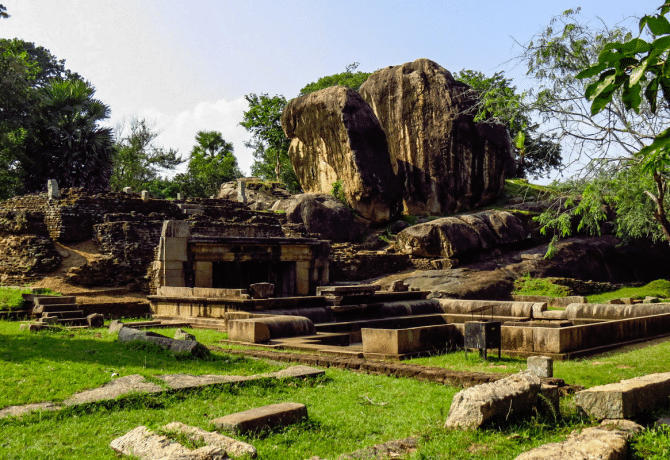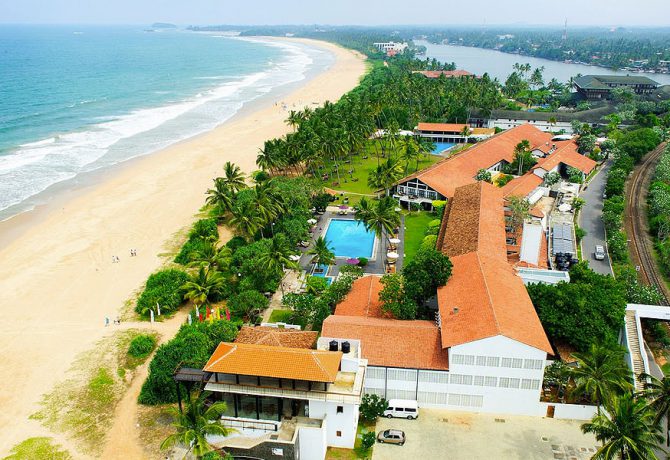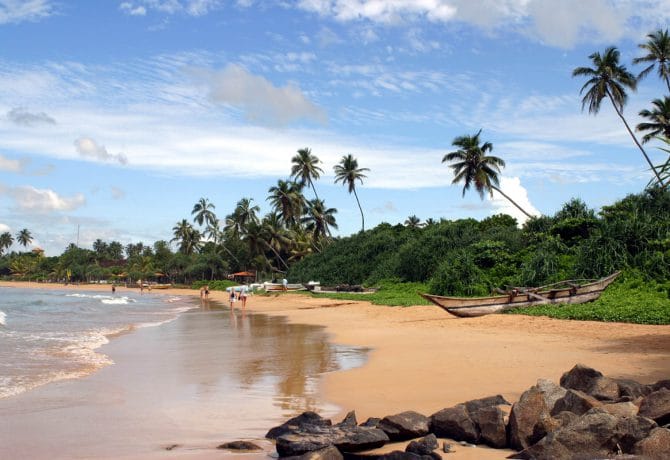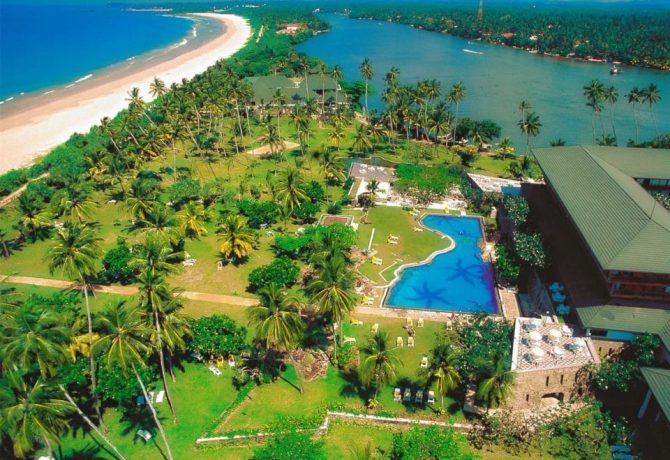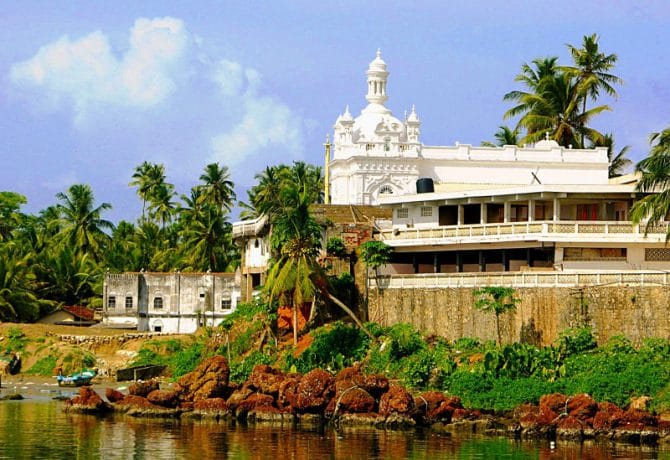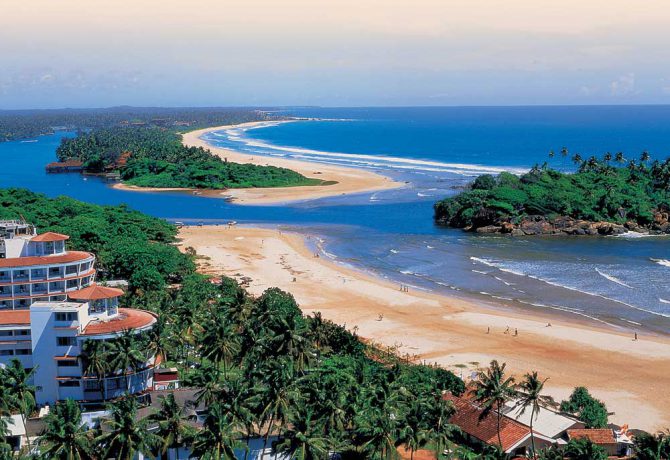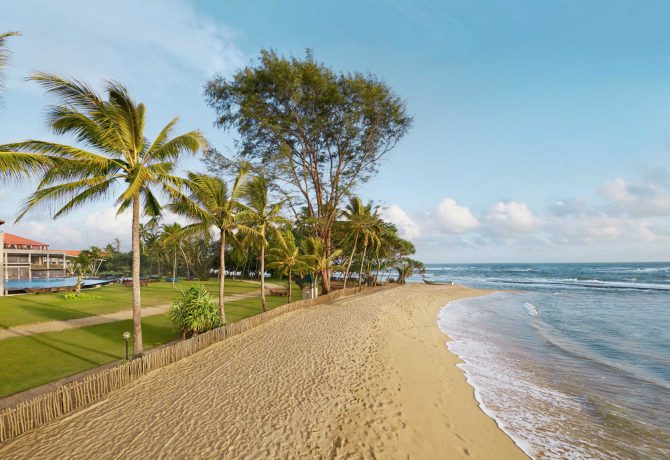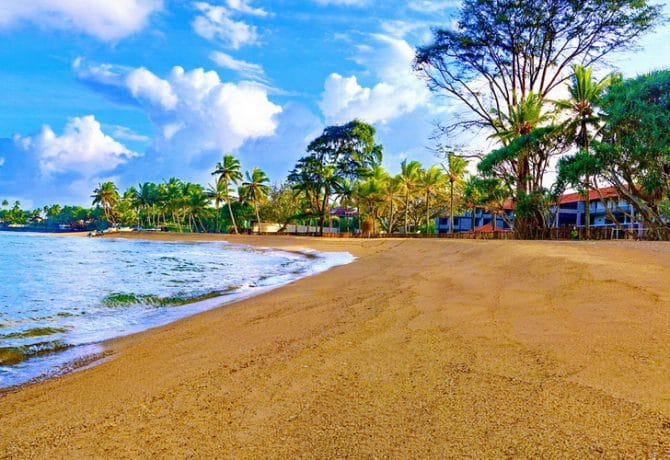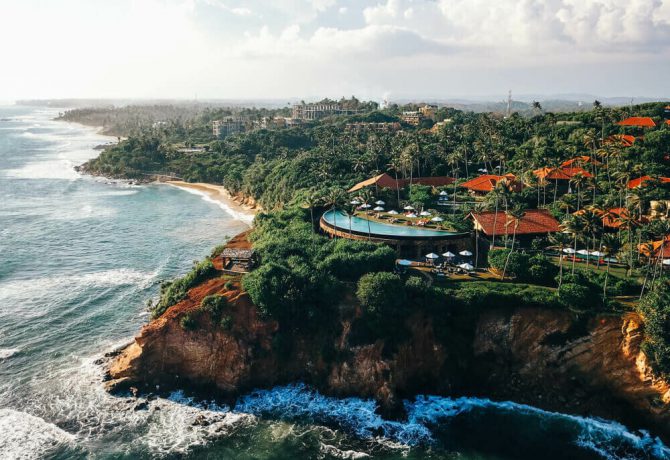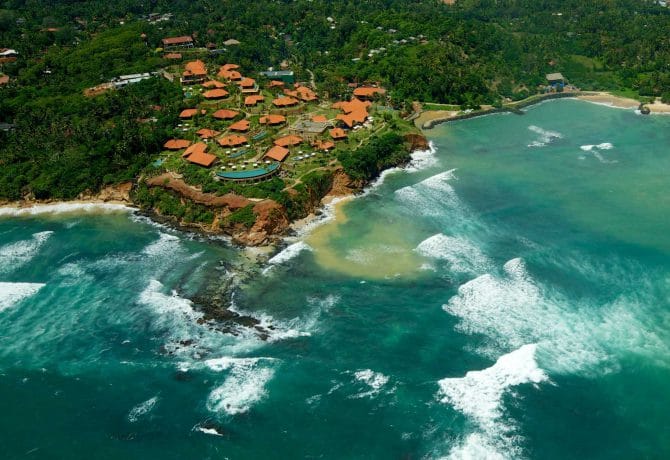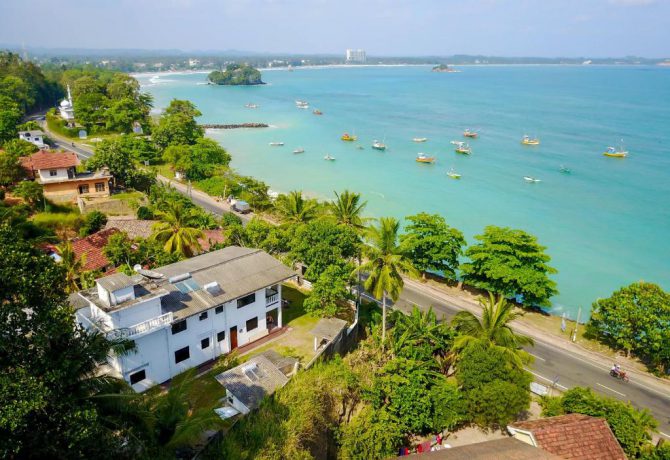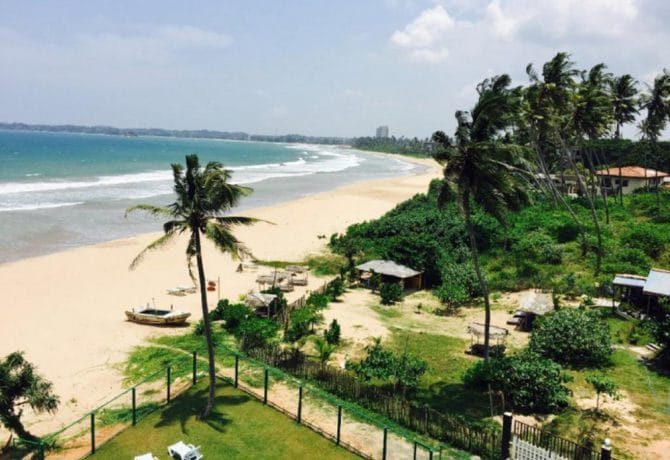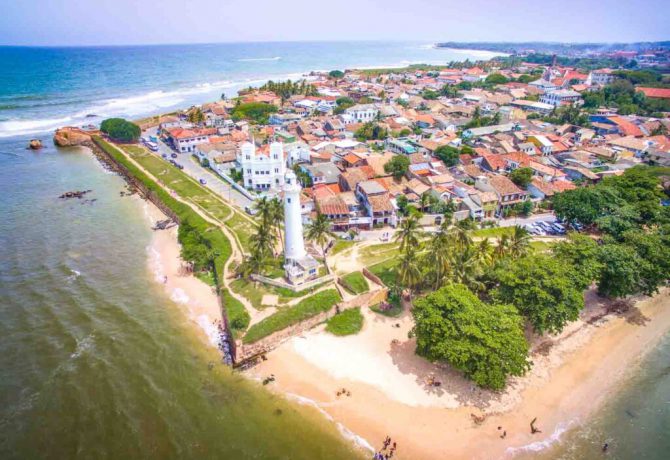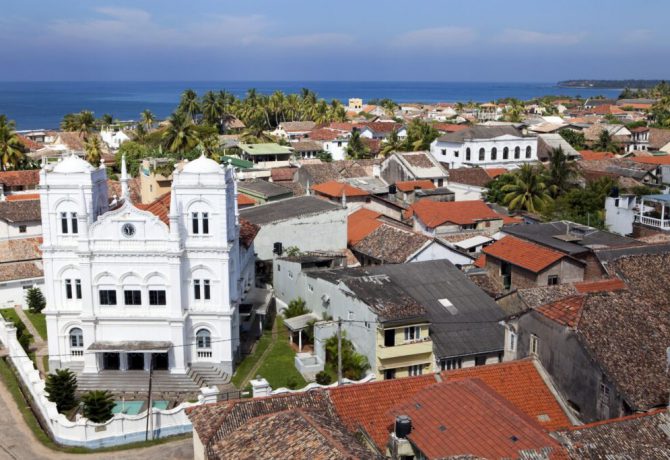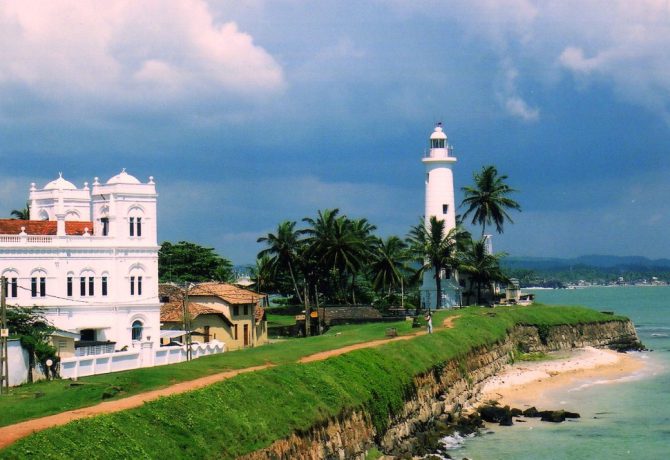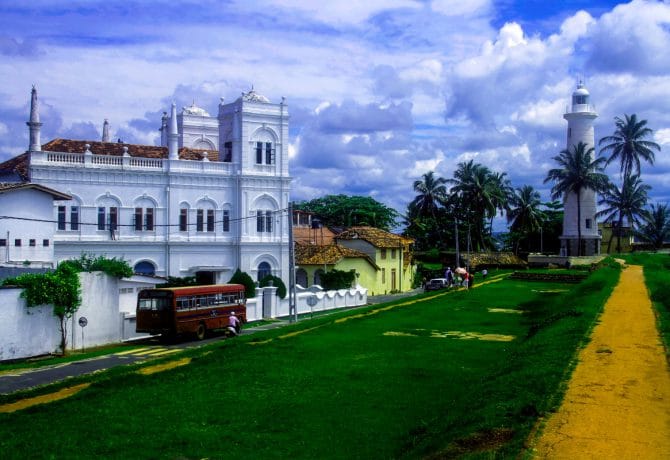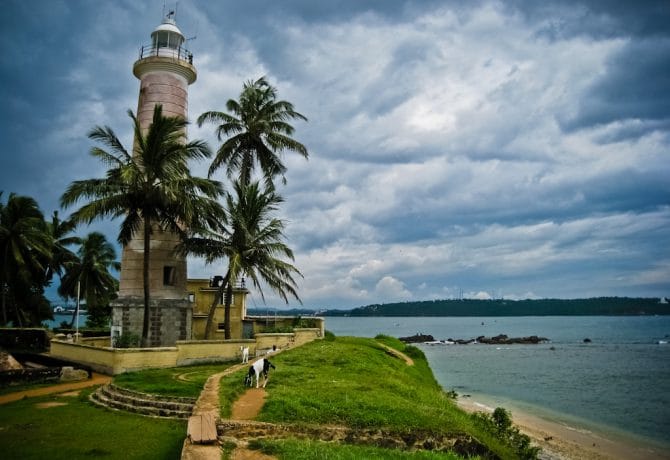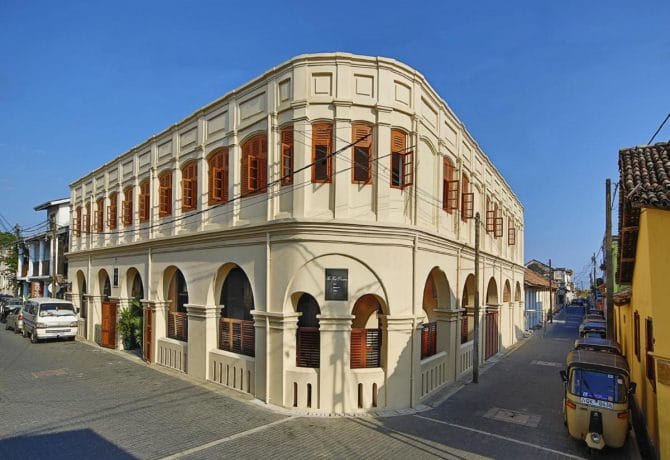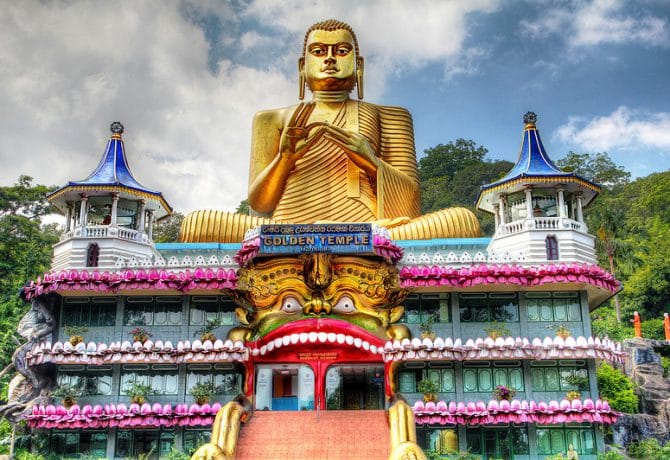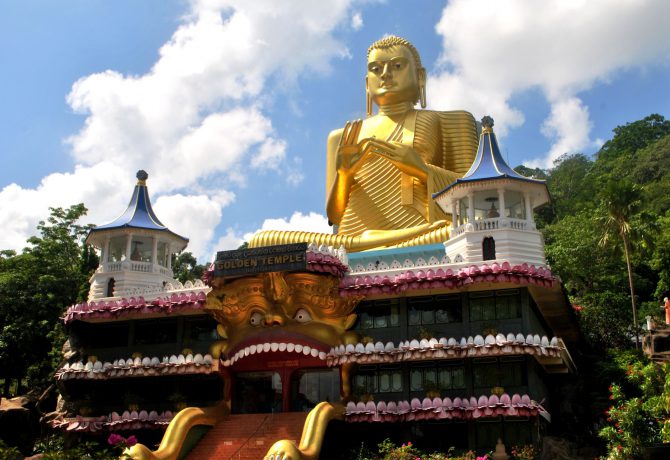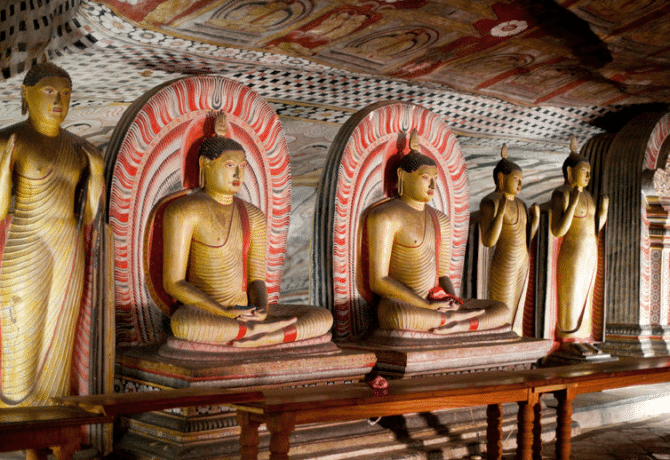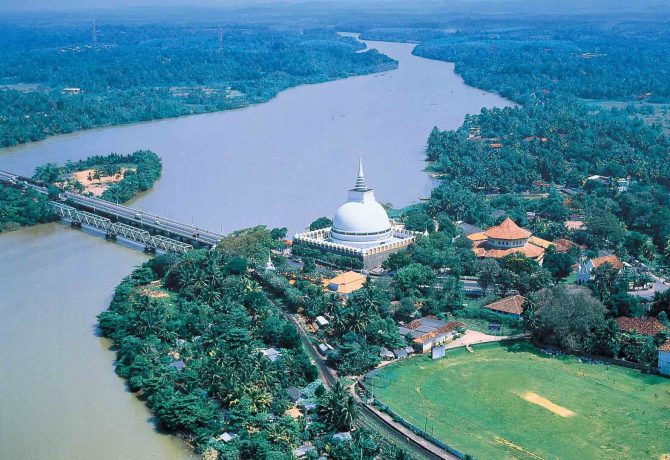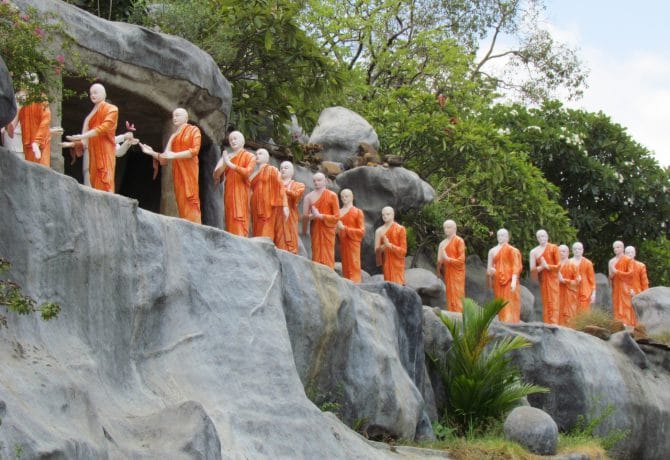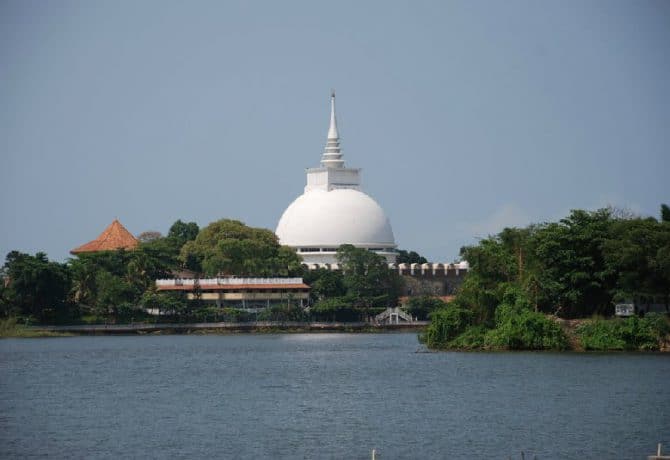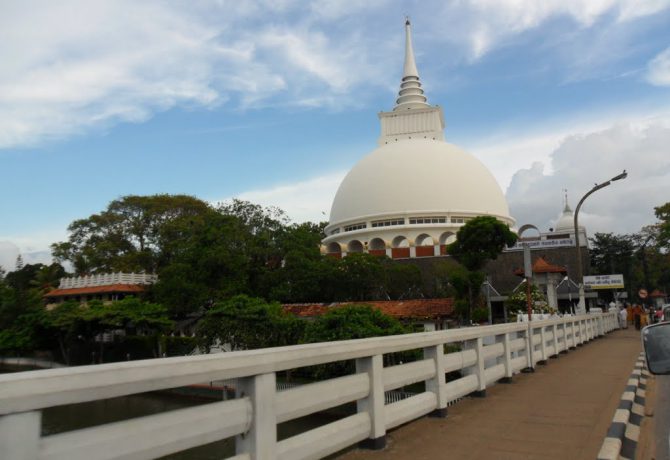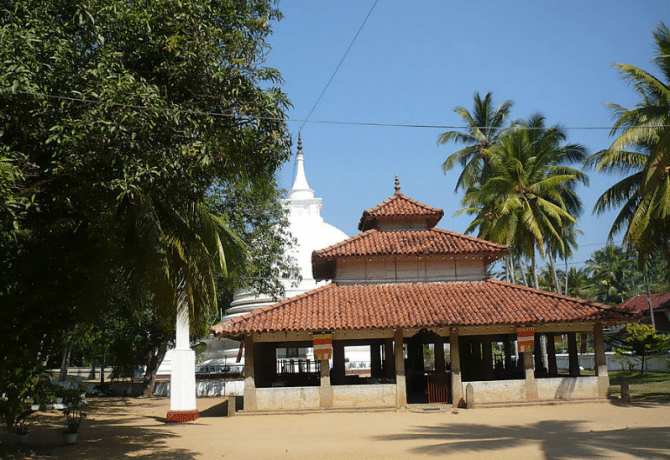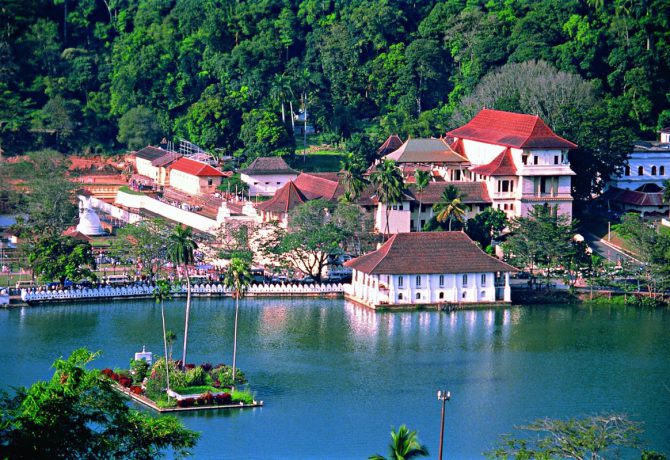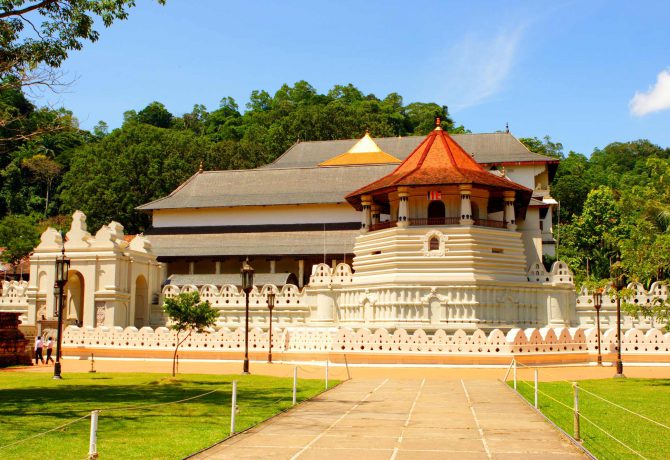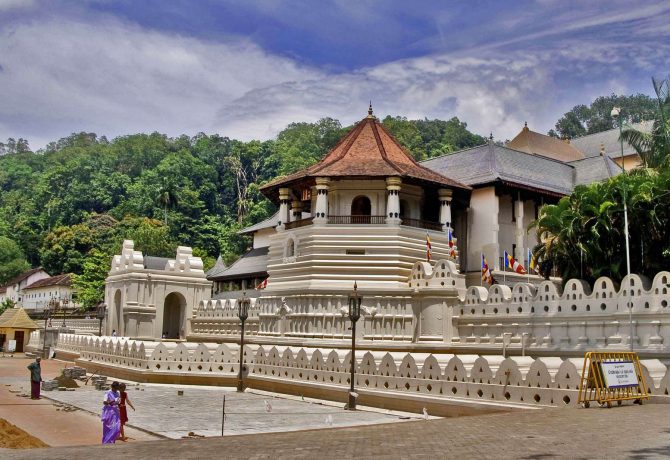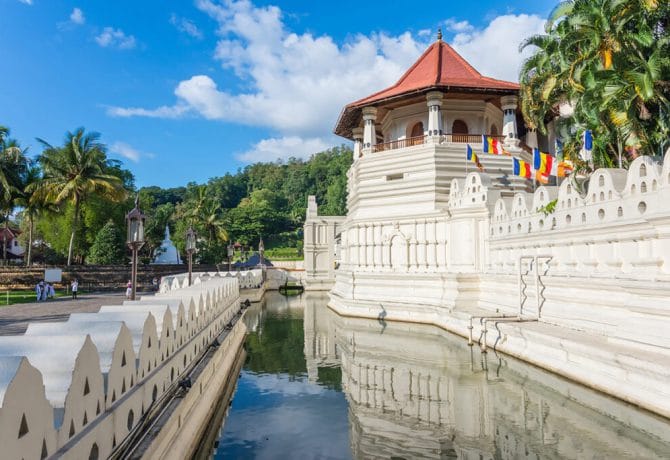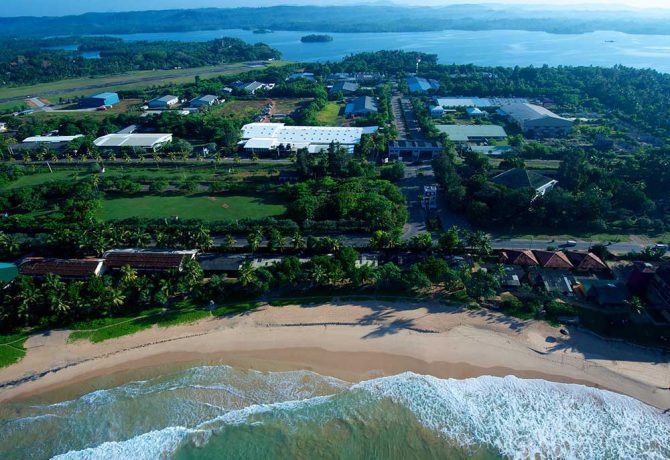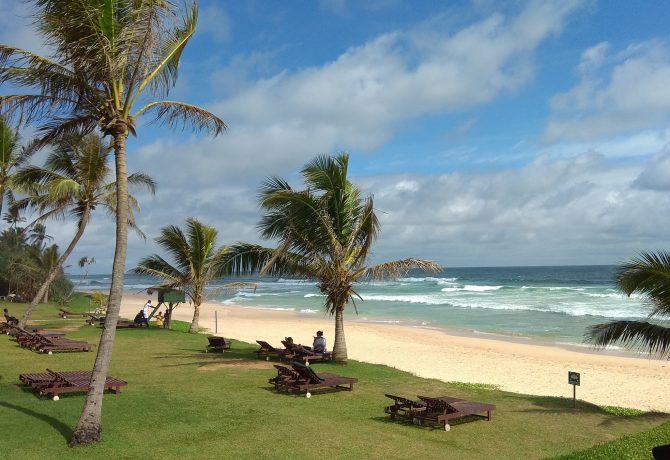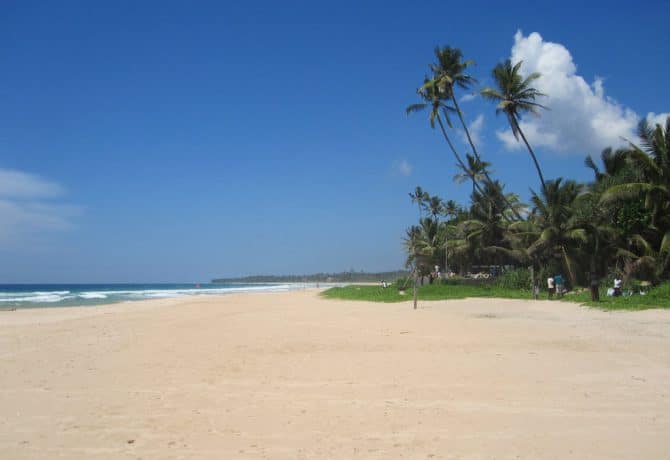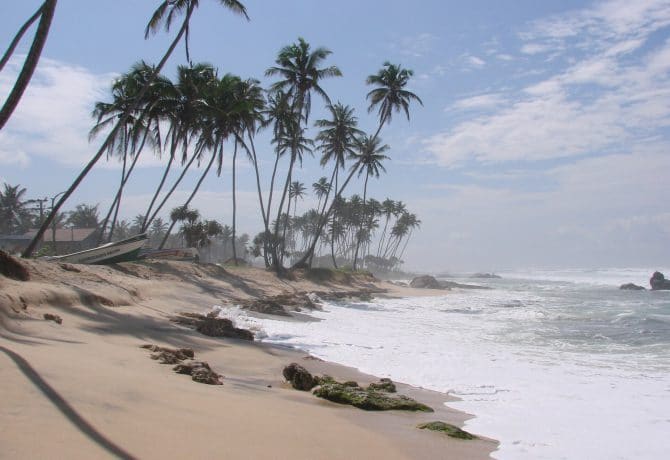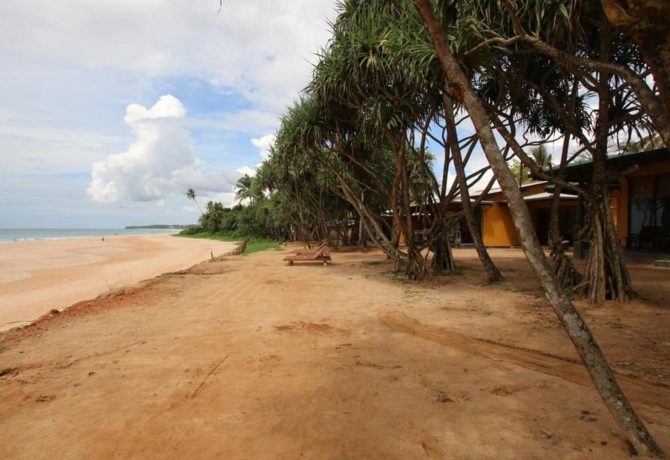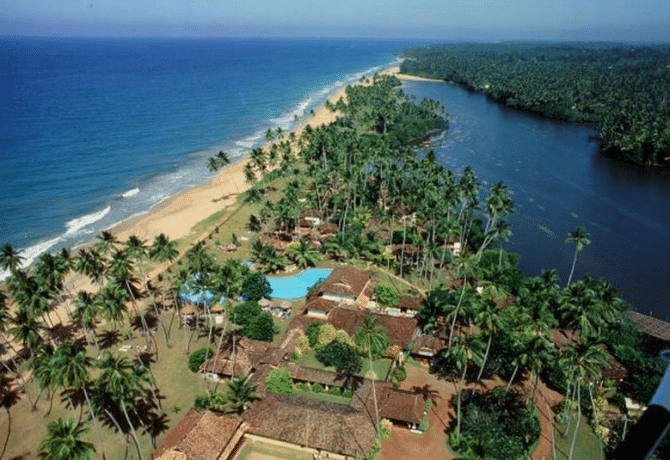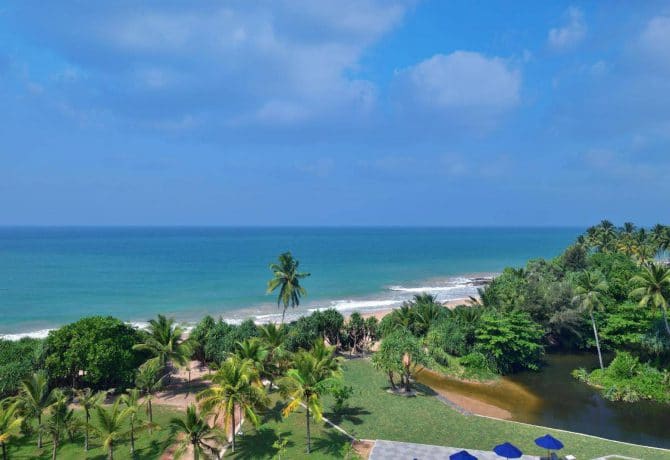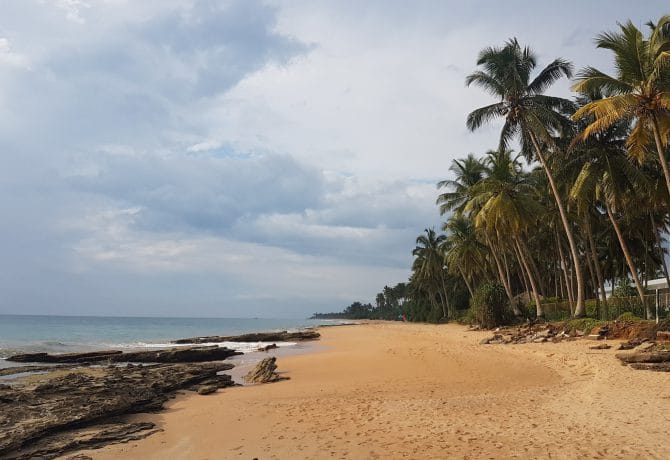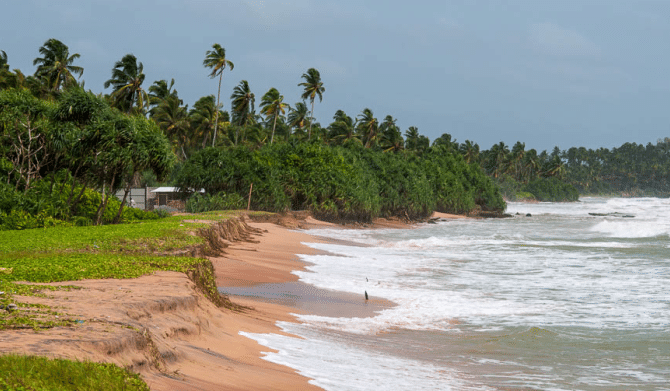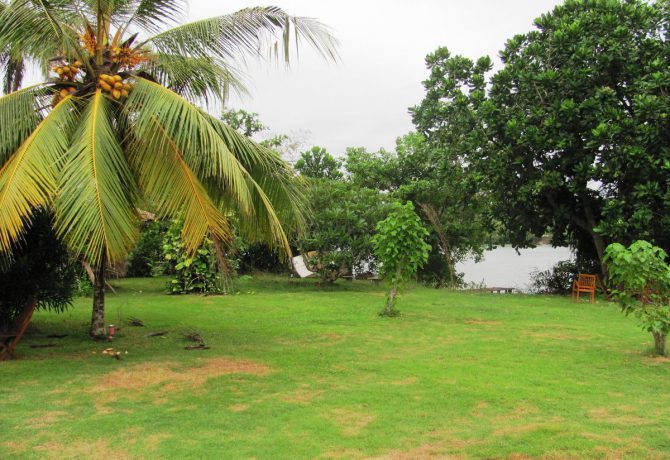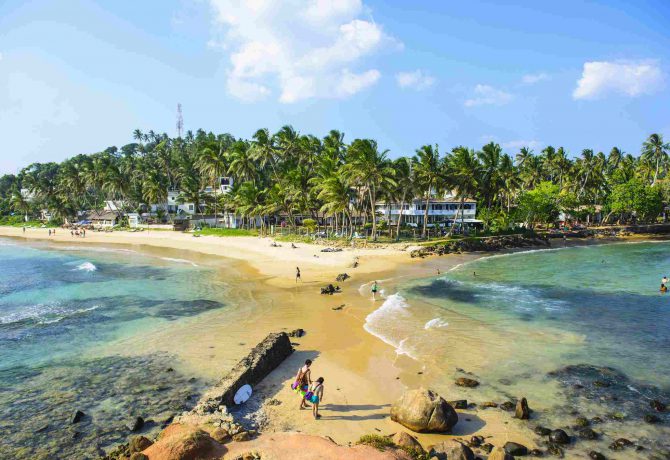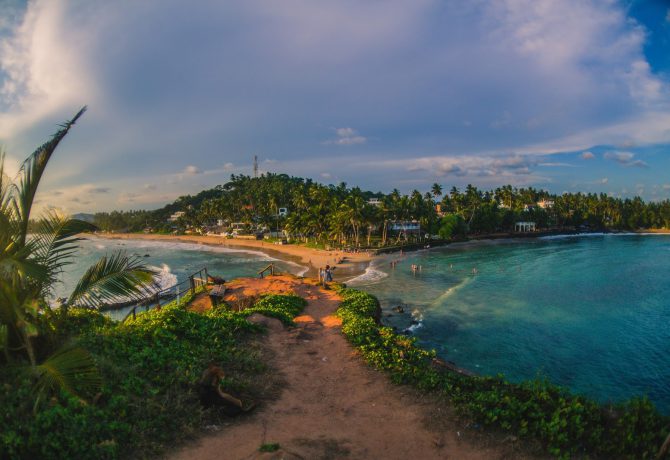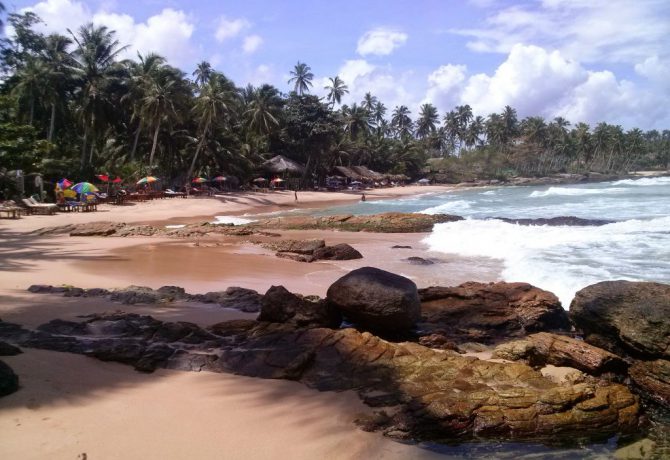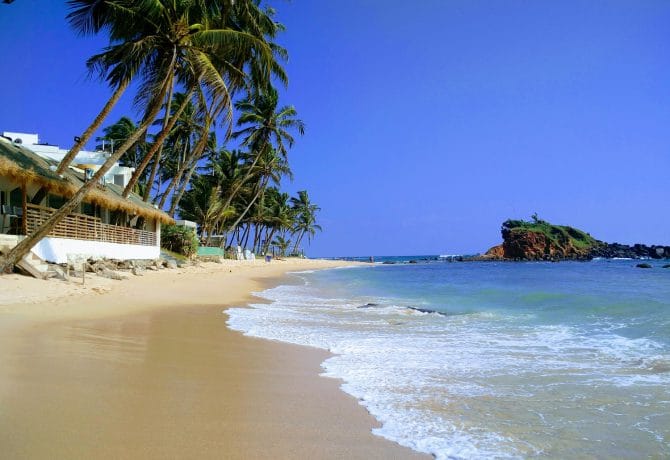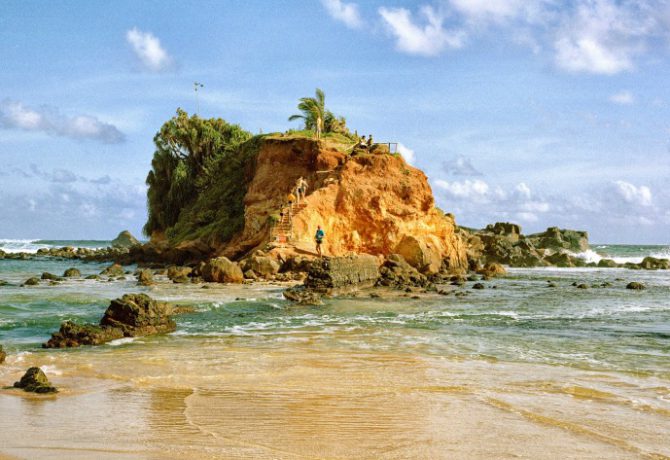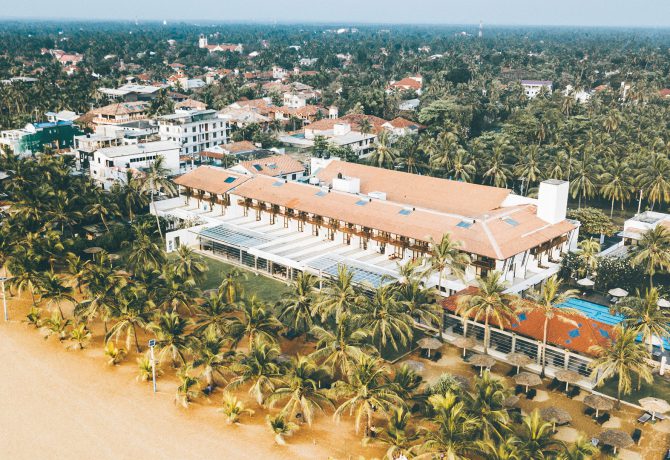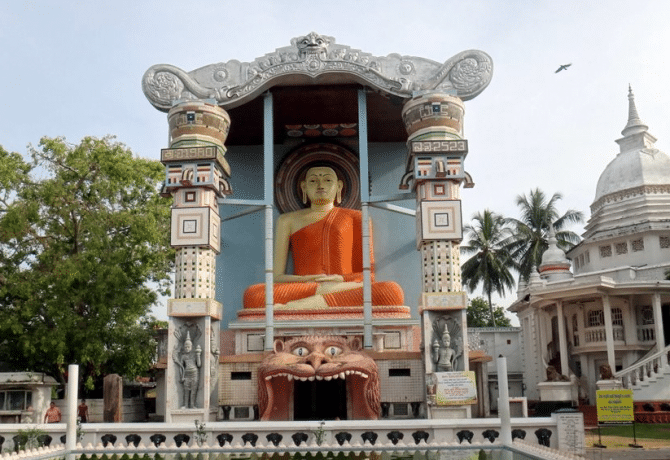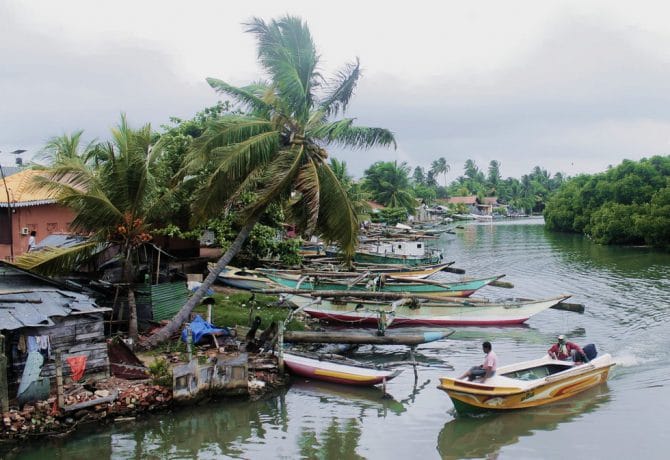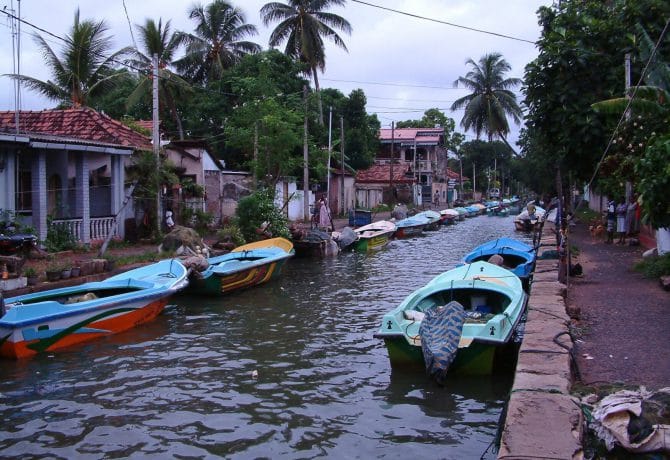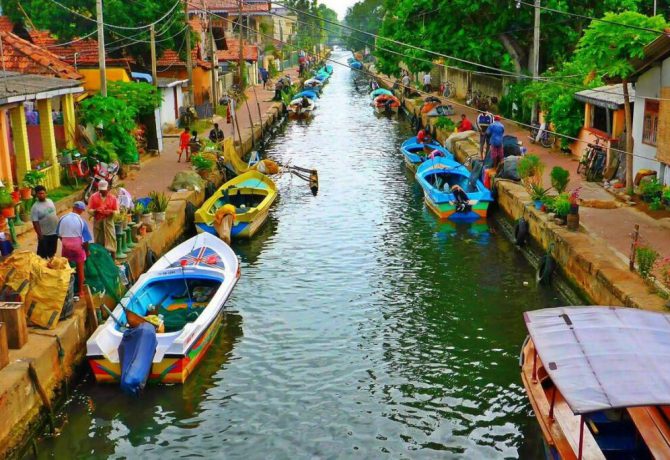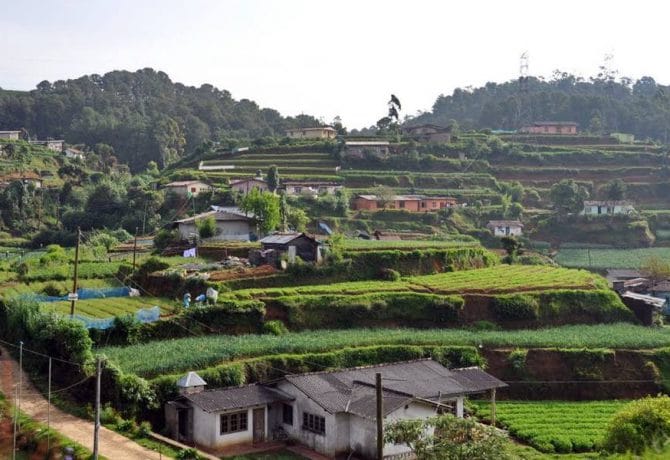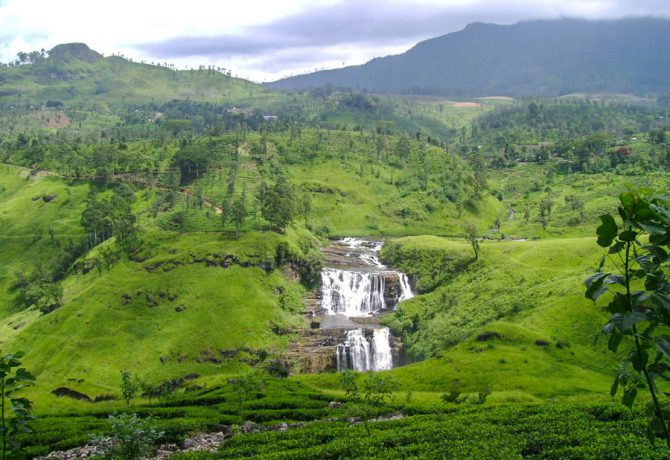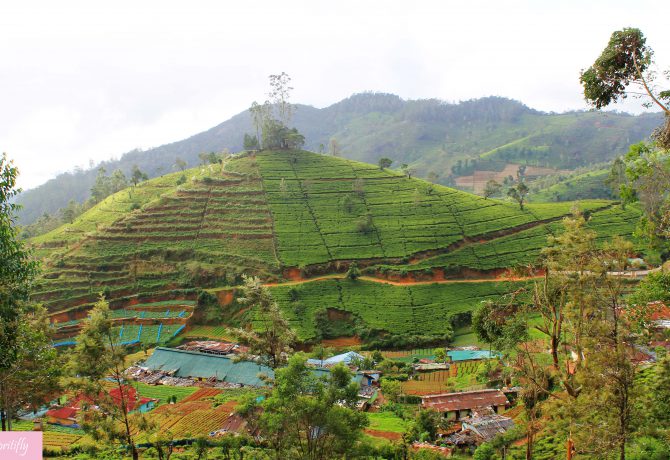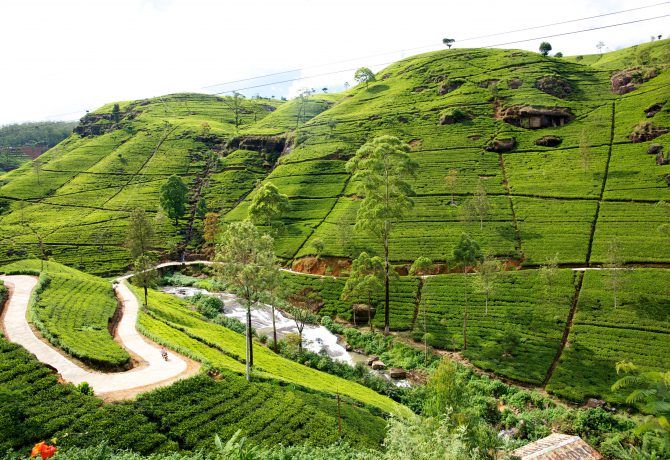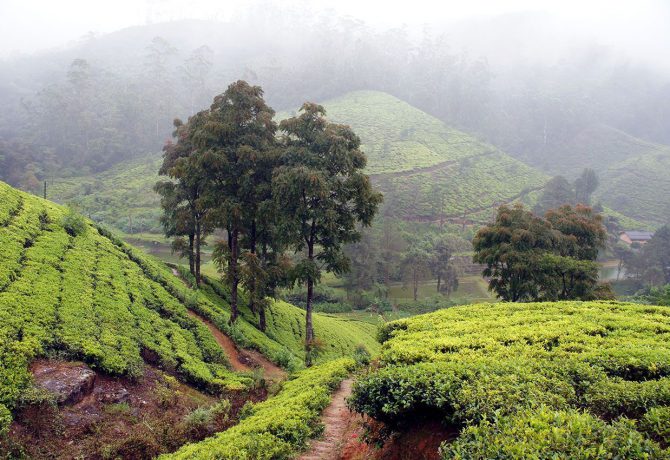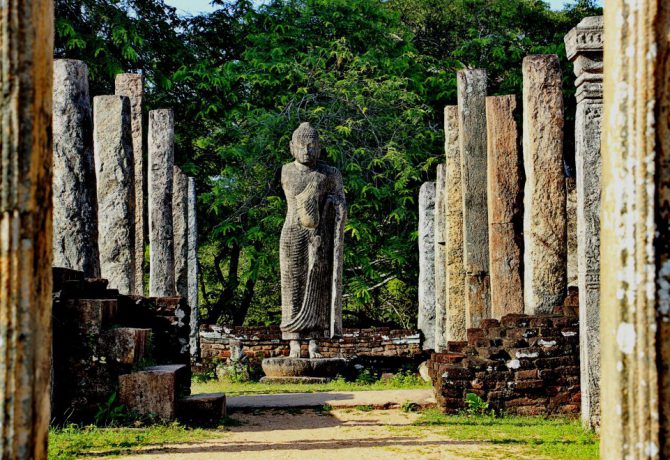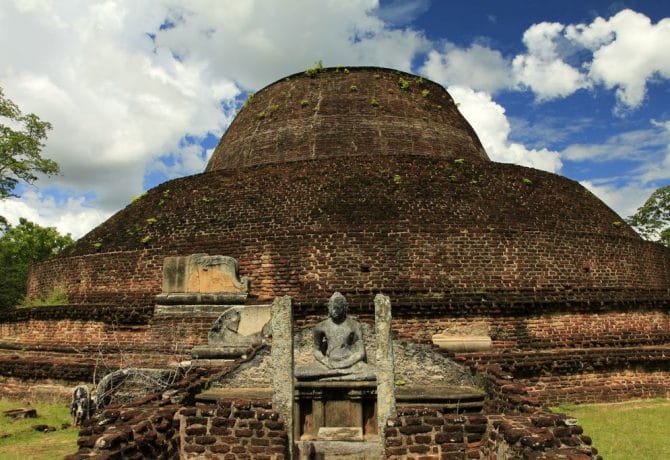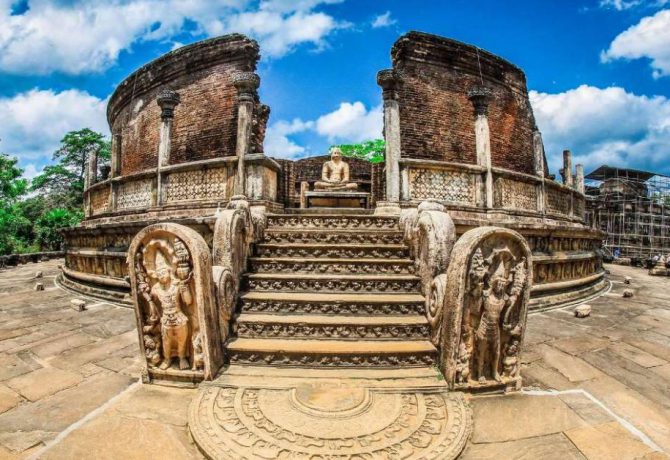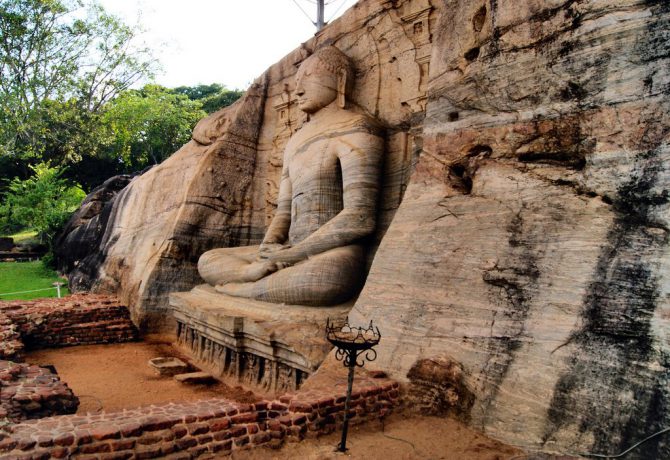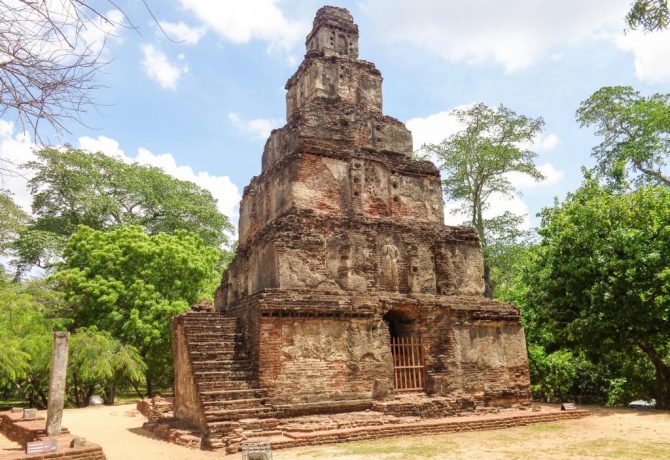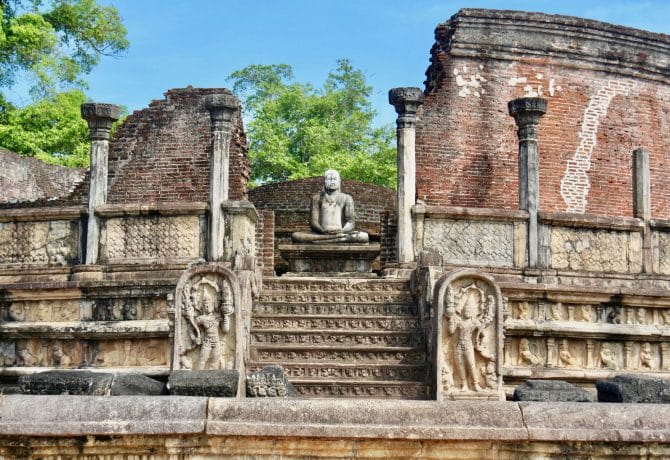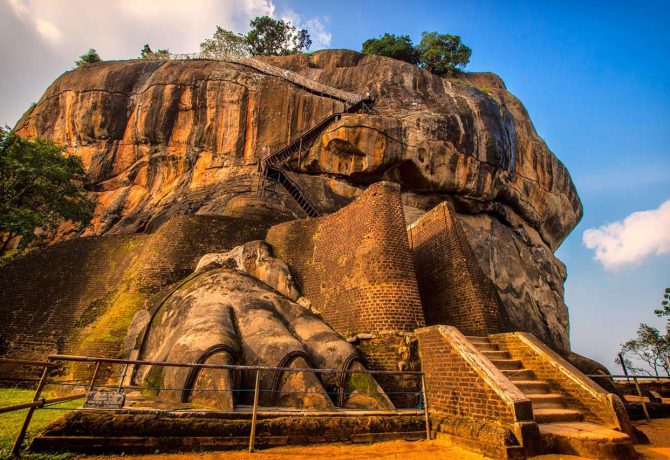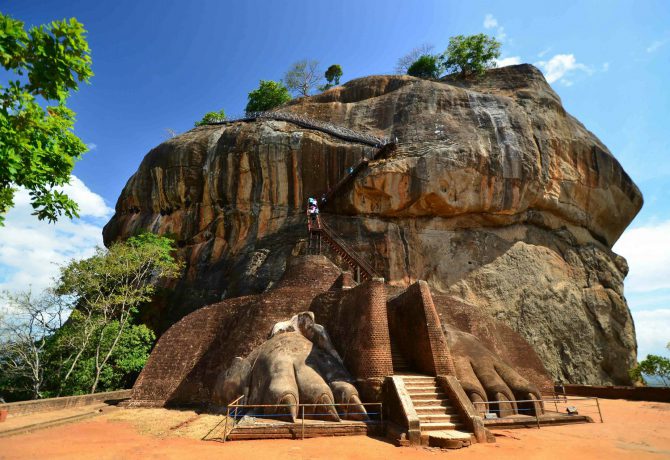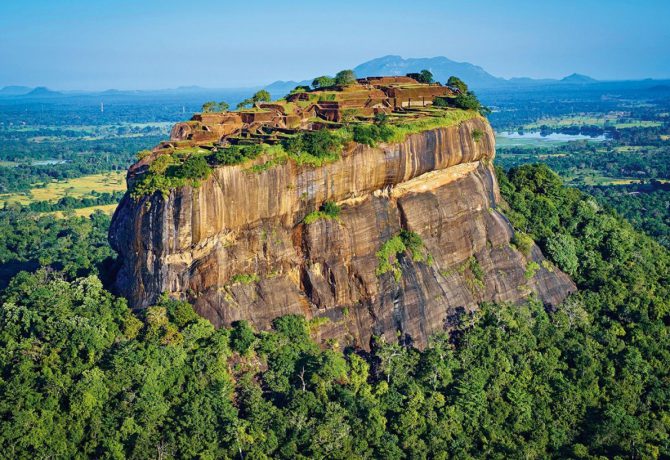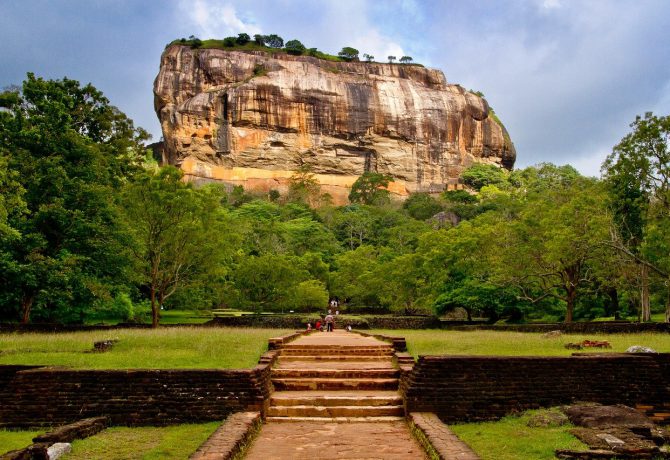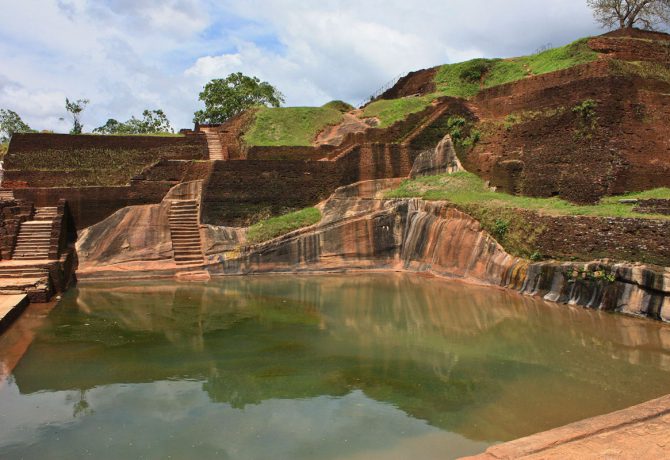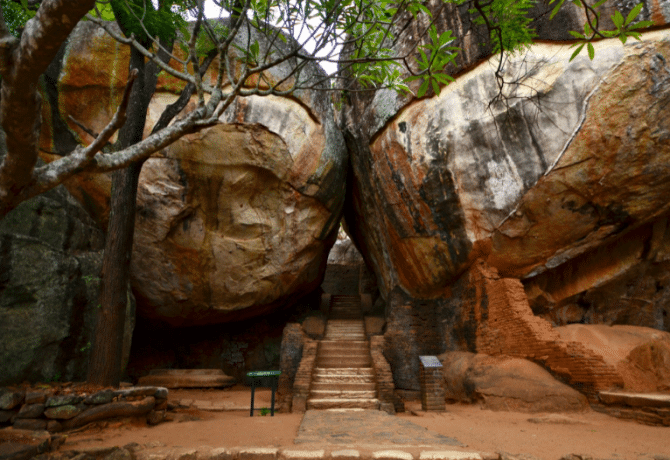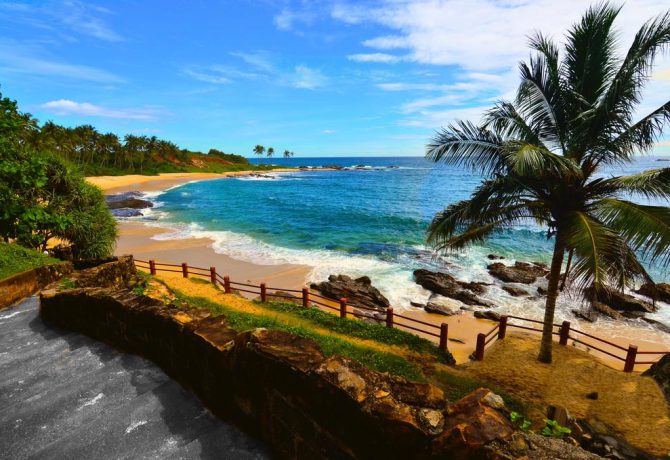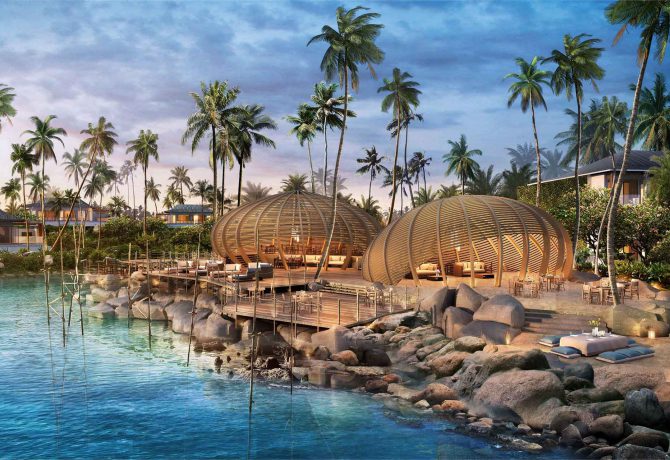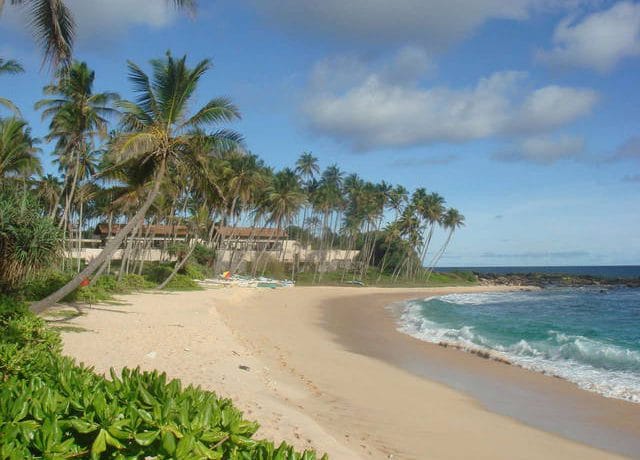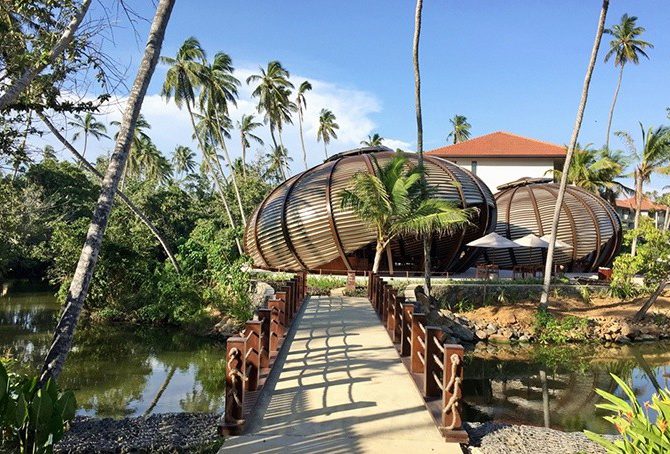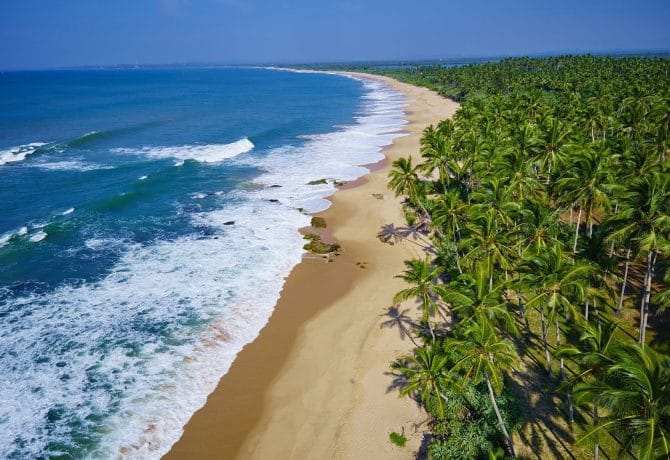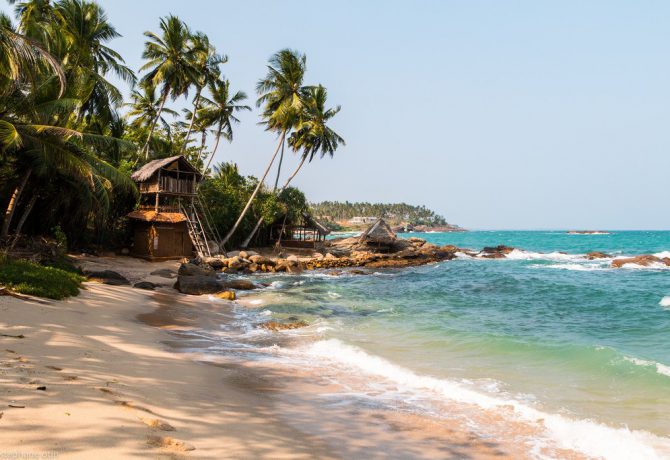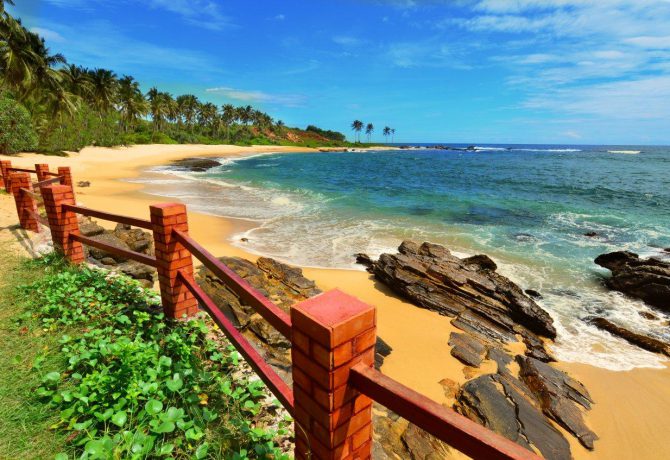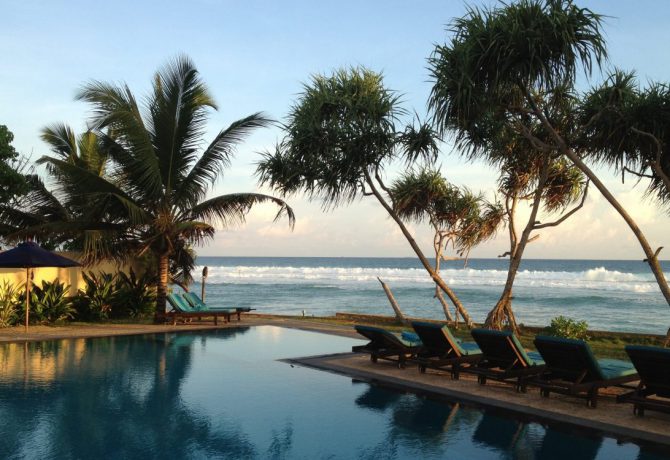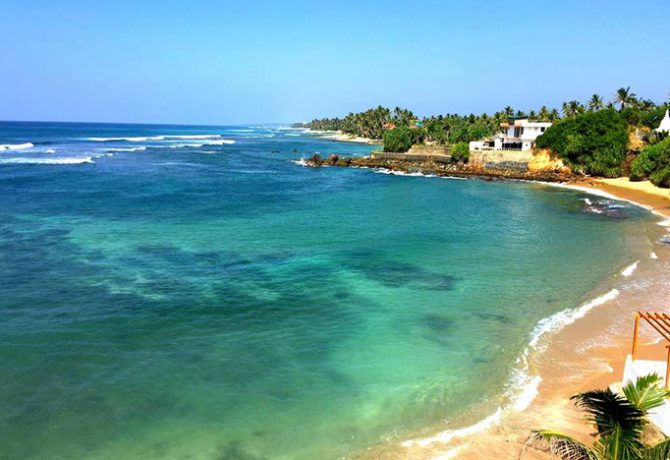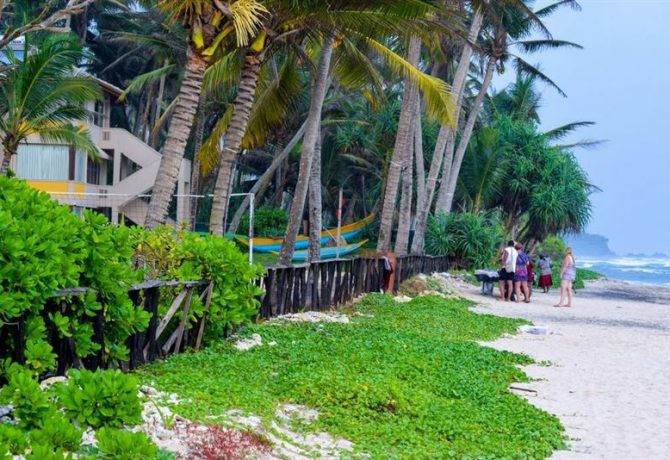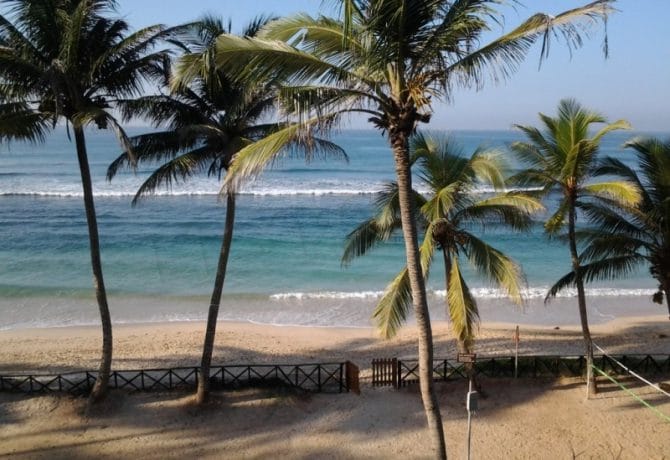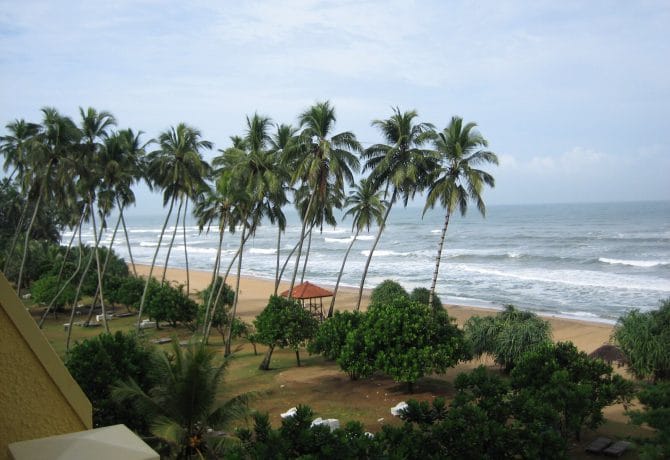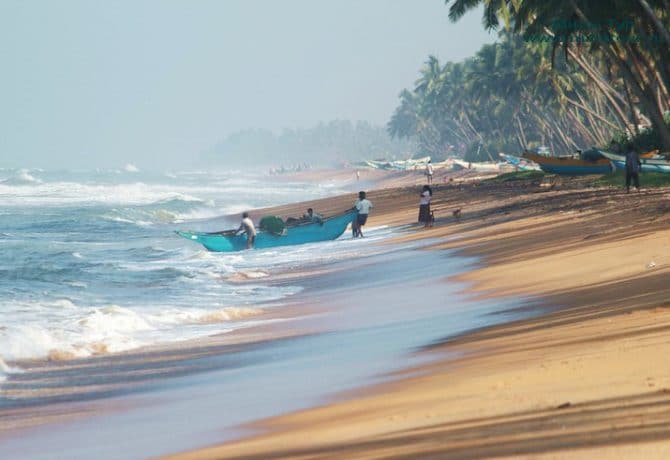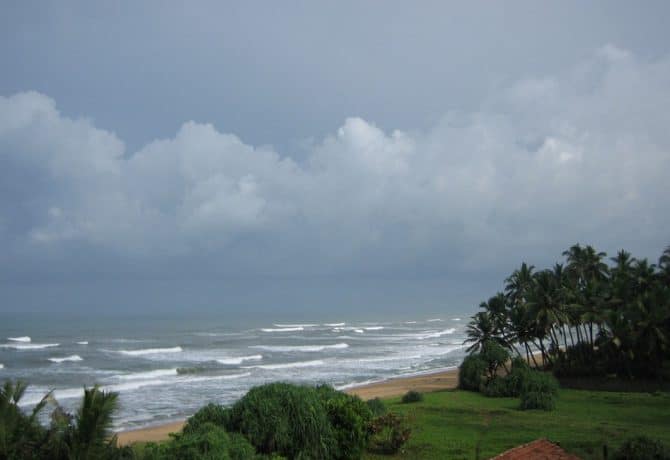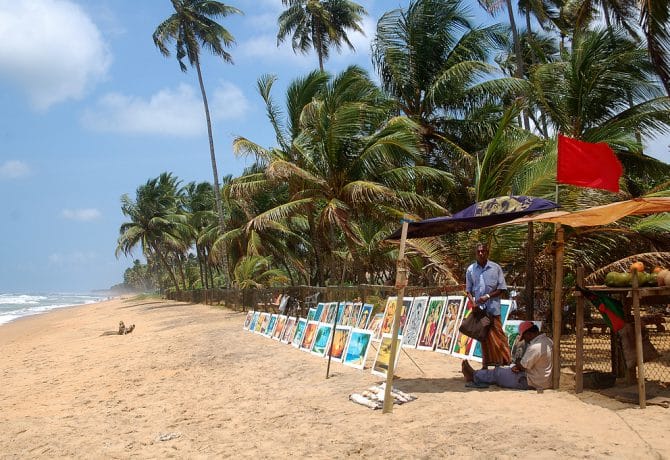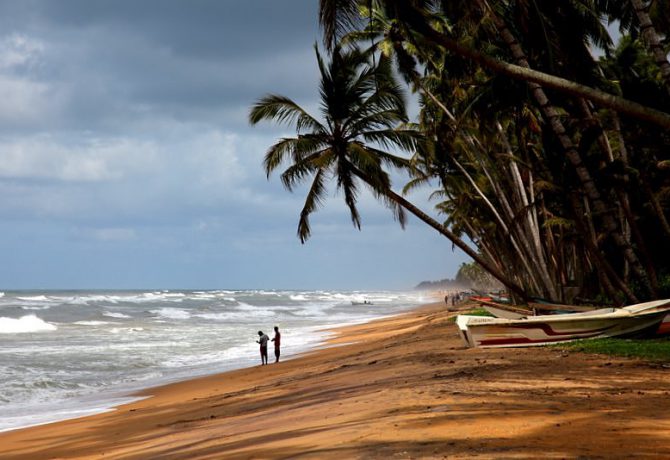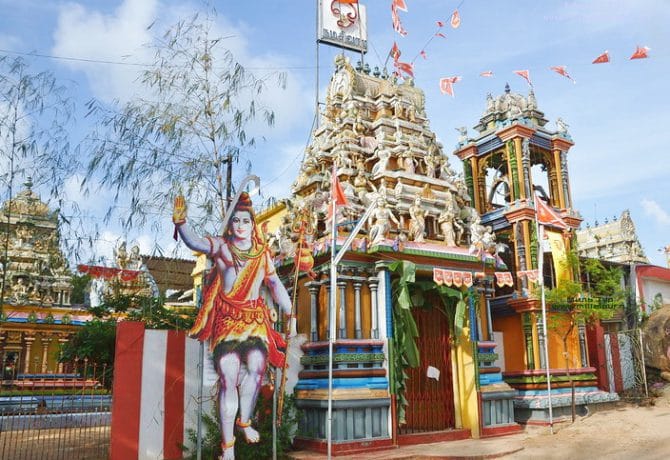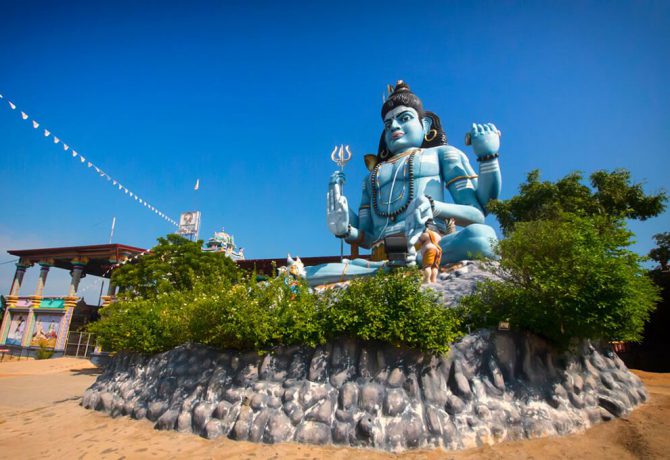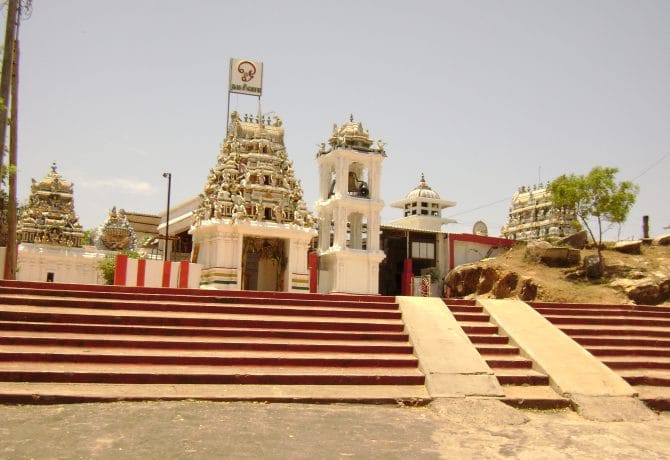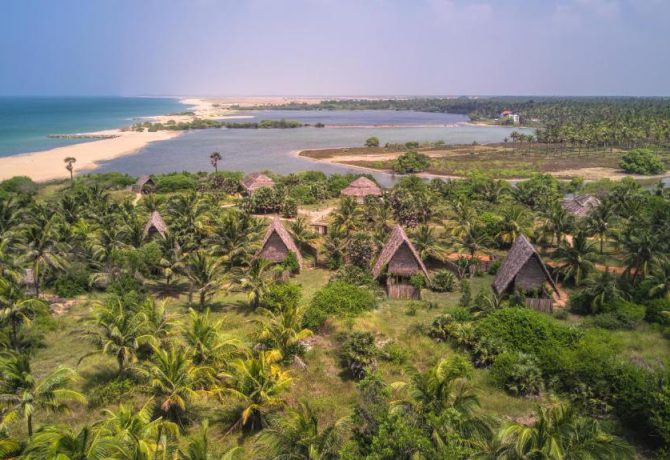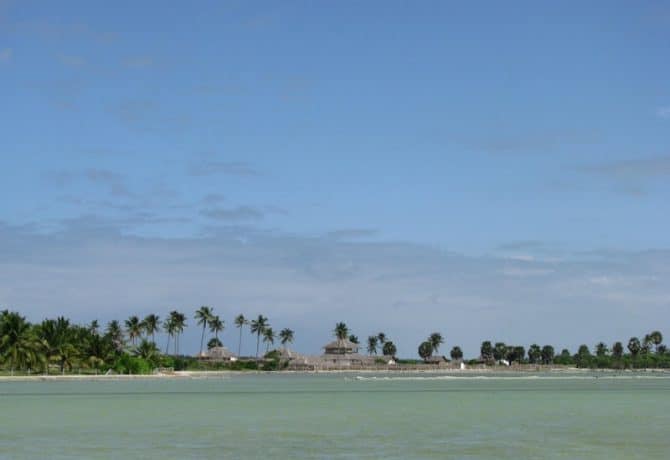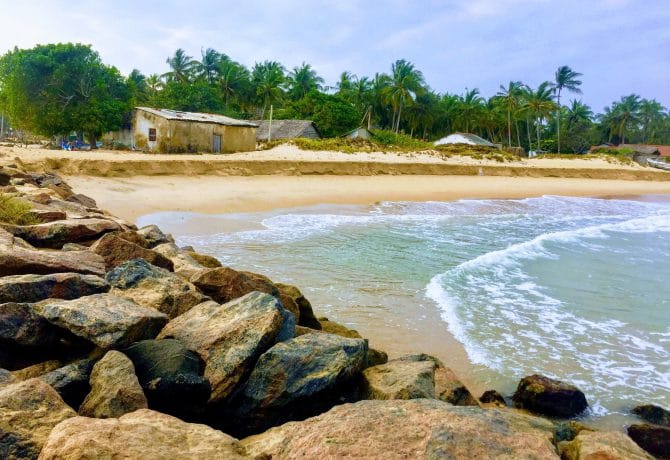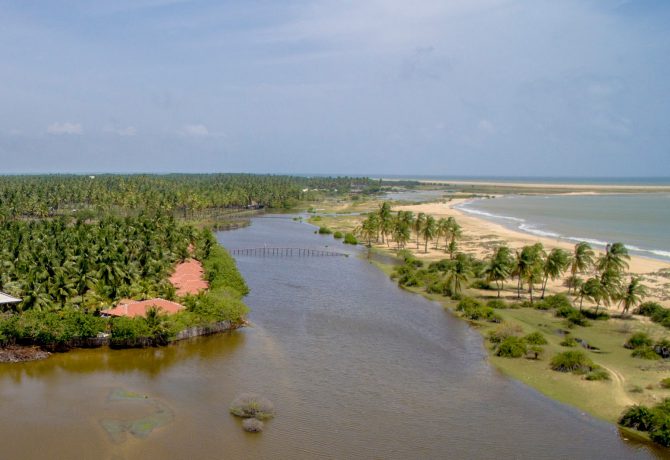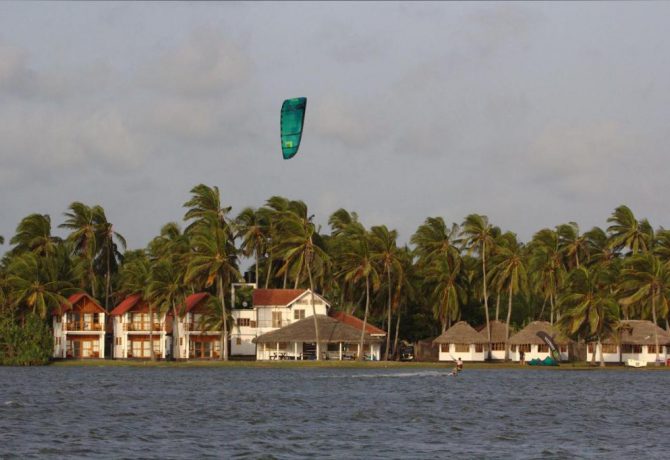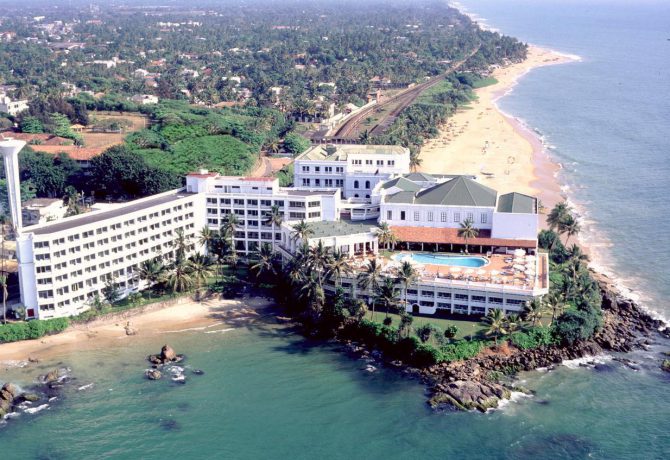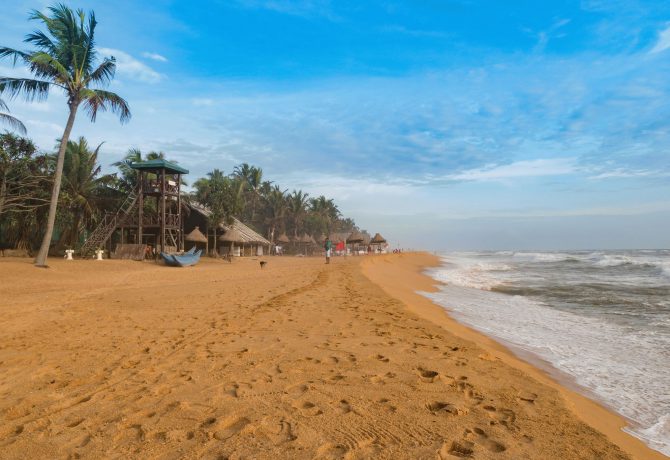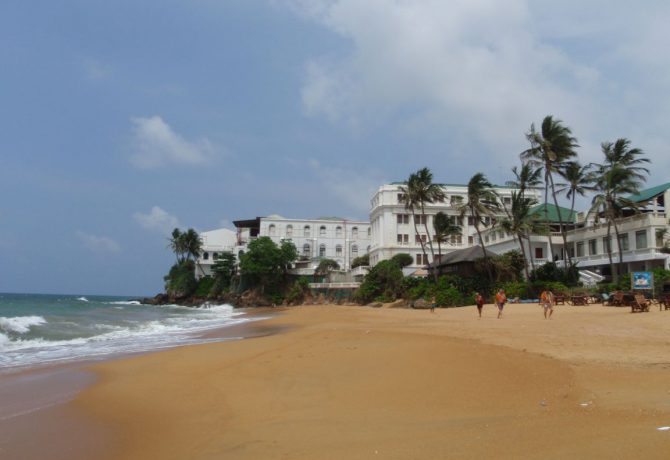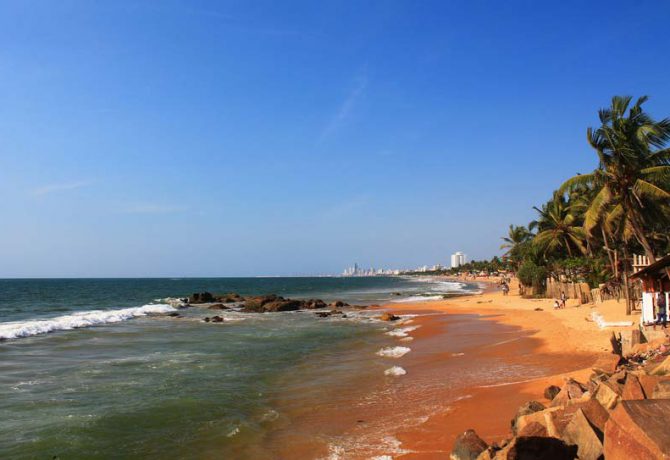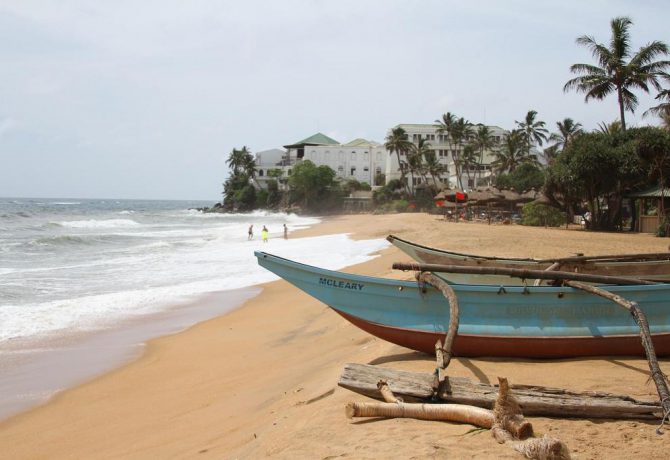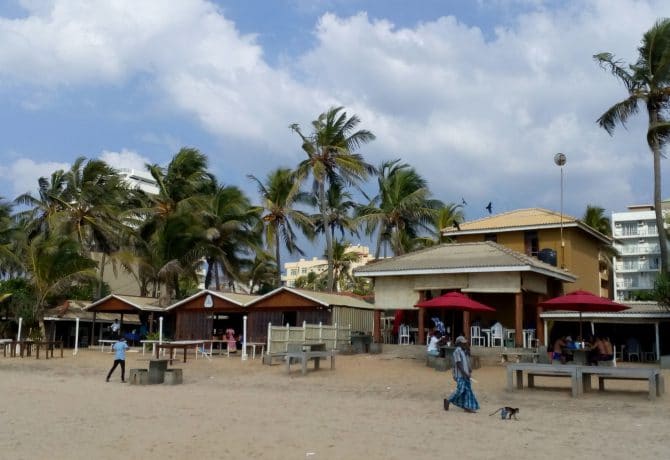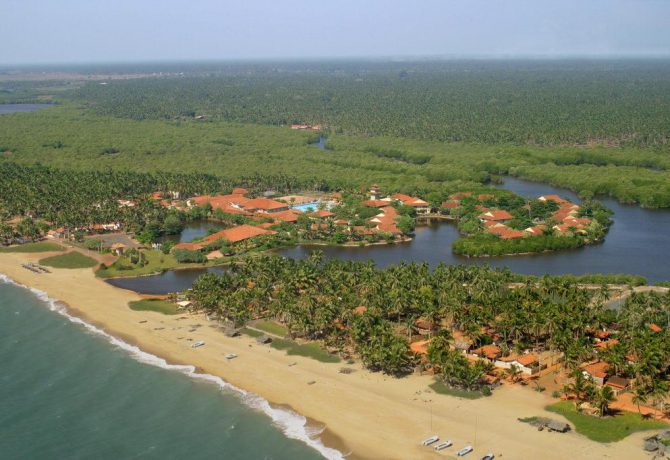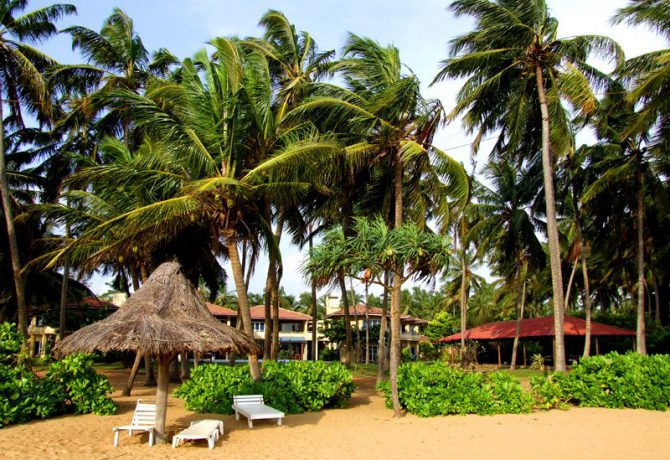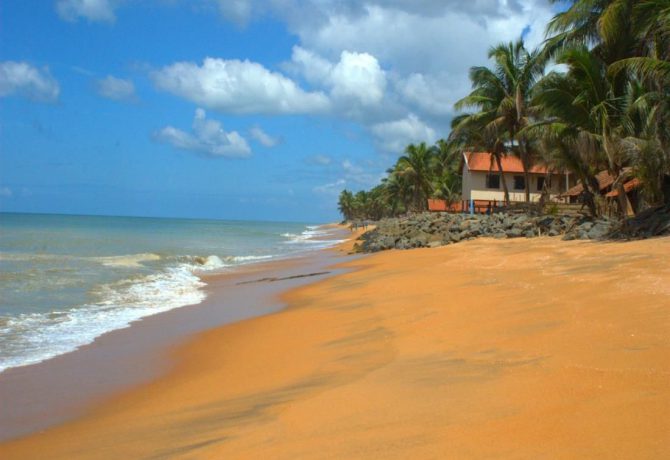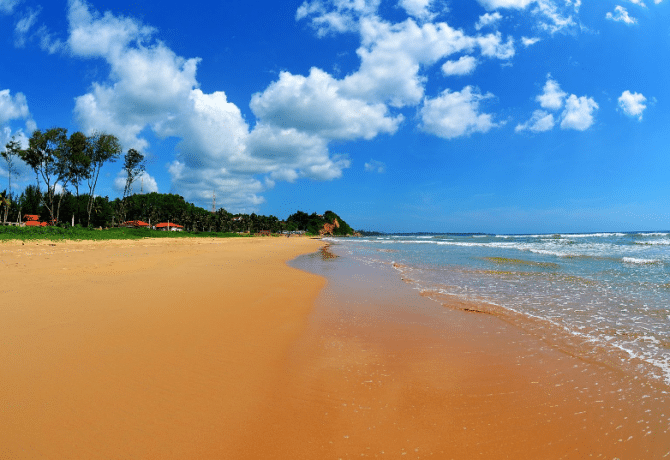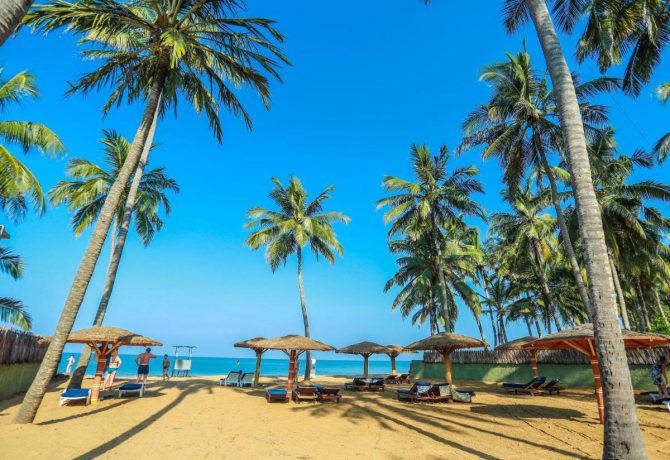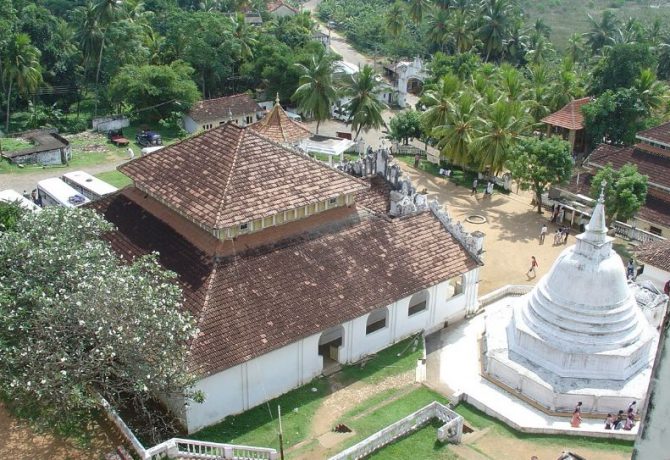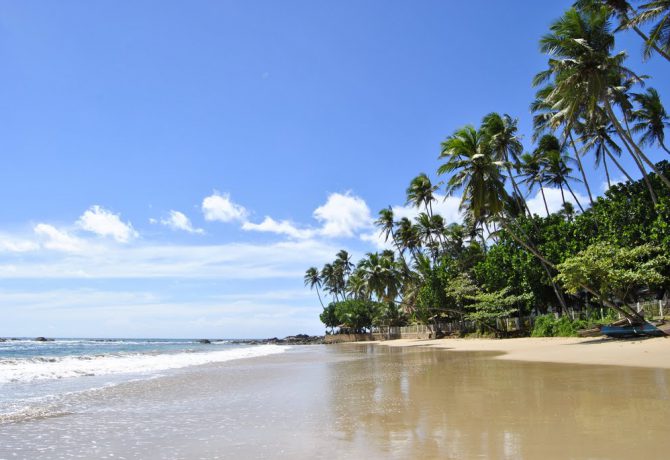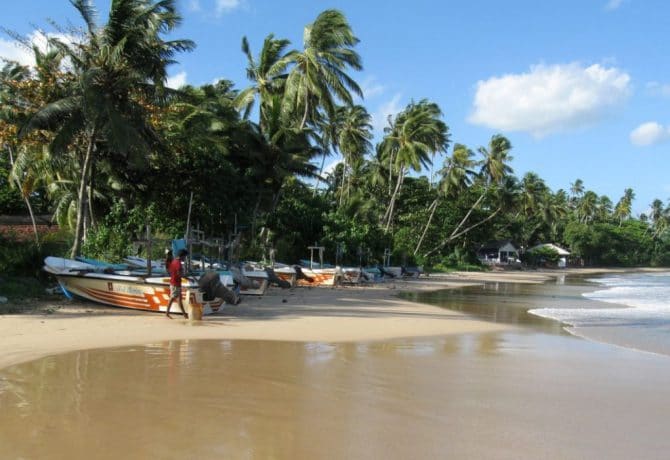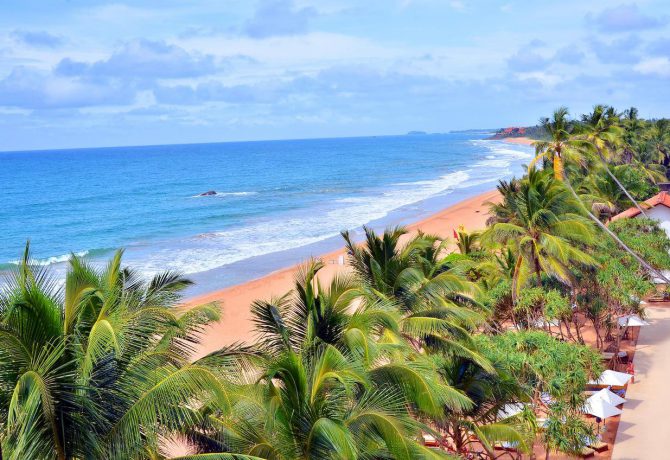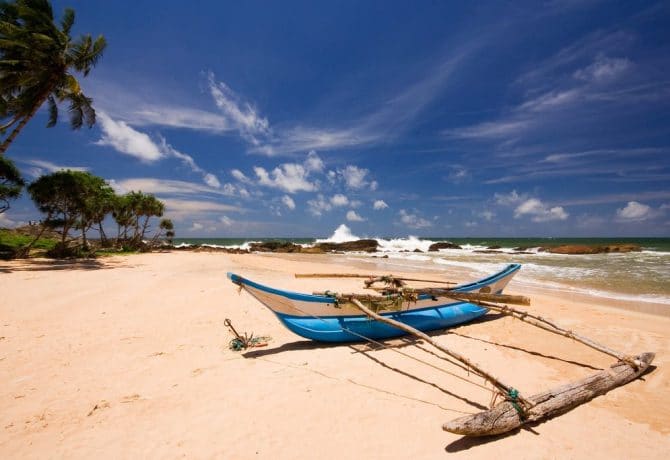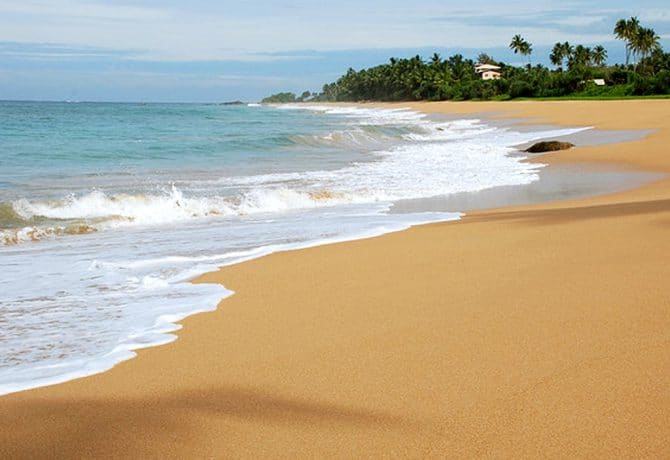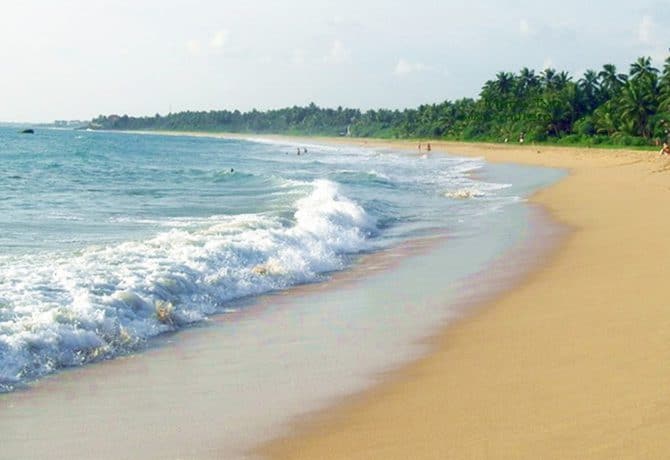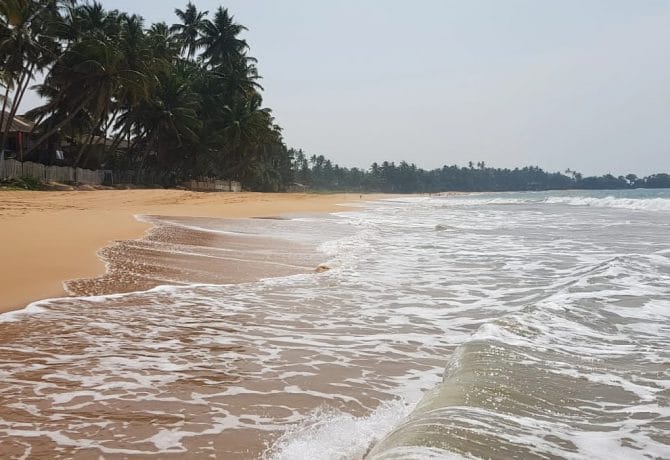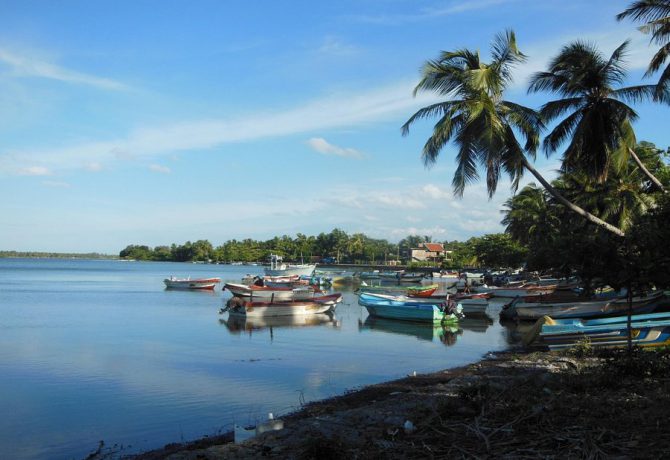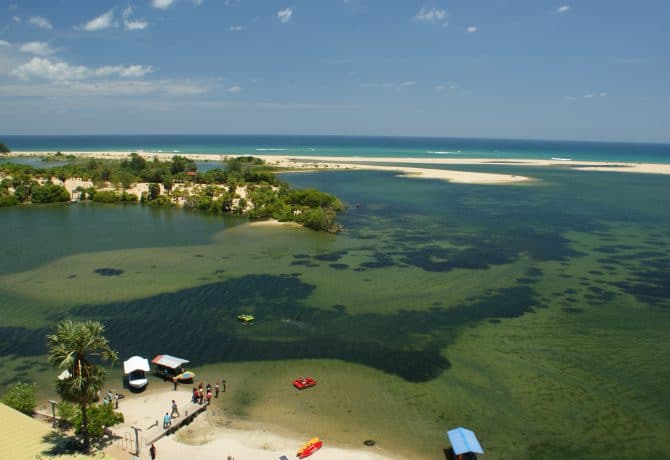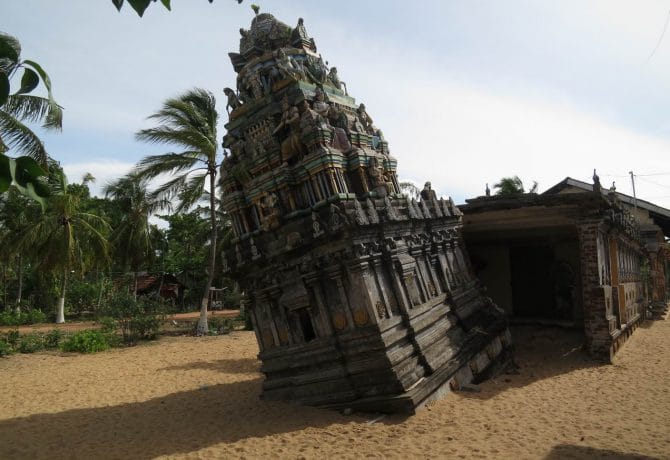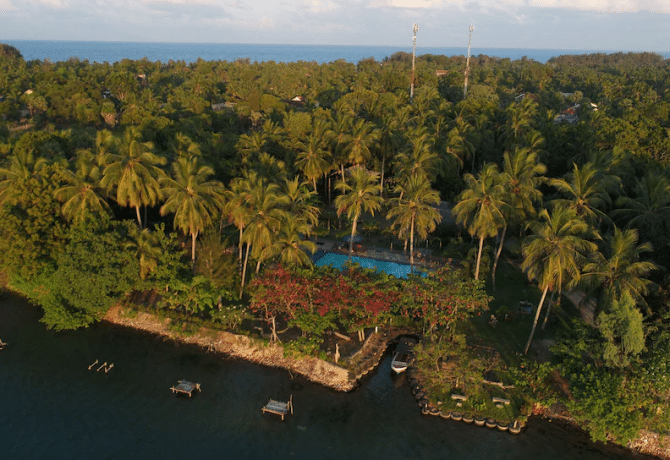Sri Lanka is beautiful, it is impossible not to love it. One visit and the enchanted heart remains forever in this hellish humid climate, among mosquitoes, lizards and cunning cheerful natives in strange clothes, grandiose Buddhist temples and truly endless shopping arcades. The languid breath of the bright, as if painted, Indian Ocean, the constant noise that subsides only on religious holidays, the smell of sweat, dirt and something fried: like all ancient civilizations, the Blessed Land (the meaning of the word “Sri Lanka” in Sanskrit) captures the traveler into slavery, fools his head and deceives the senses.
Sri Lanka is a place of power, of which there are very few left on the planet. Here you need to rest skillfully. Listen and look closely, walk with your feet, hide your face from the sun, wear linen and cotton, try everything and not believe anyone. Avoid local water, quench your thirst with coconuts, have breakfast with small terribly delicious bananas, dine spicy, like the gaze of a local Muslim, curry, and dine rice with coconut milk. By the way, Sri Lankan watermelons taste disgusting, much worse than greenhouse zucchini in November.
The climate in Sri Lanka is tropical monsoonal, with a season of rains and winds that last from June to October. And from October to March there is a relative lull: this period is officially the high holiday season and the best time to come to the island to relax.
Sri Lanka is an island where cows are revered, so the tourist is recognized as the main milking animal. Everyone is trying to deceive, calculate, weigh, rob here, from macaques to policemen. Actually, they can be understood: this is not them, this is life like this – a significant percentage of Sri Lankans are poor and extremely superstitious.
The main disadvantages of Sri Lanka are:
- Security problems: thieves (both on foot and on scooters) steal bags, snatch gadgets from their hands, pull chains, earrings, bracelets. There are frequent cases of theft from the rooms of even the most prestigious hotels. For the rented apartments from a private owner, no one vouches at all.
- The lack of sane car maps, public transport schedules and traffic rules: the risk of getting into a small accident with a local taxi driver or tuktuker is far from small. Well, the fact that the cabbie happily carries burdock-tourist throughout the area, it is not even discussed. The maximum allowed in the city is 52 km / h, outside the city – 72 km / h. Sri Lankans would be happy faster, but the local highways represent a lunar landscape.
- Attendants often speak very poor English. Although it is worth admitting: the higher the class of the hotel or restaurant, the better the pronunciation and the wider the vocabulary.
- Do not count on affordable Ayurveda. In most hotels, regardless of the star rating, spas have seasonal staff without any qualifications. Real specialists know their price, are expensive and work in specialized clinics, where the appointment is for years to come.
- Alcohol in Sri Lanka is sold at a triple price in special alcohol stores and in licensed bars, and even then not always. For example, on religious holidays, prohibition is declared. You need to take alcohol out of the store carefully so that no one notices a piece of the label, for this they are punished as hell.
- You should always have small bills (dollars, you can euro) and cash local currency (rupees), since you can pay by card only in large cities, and even then not at every point.
- A sluggish civil and interfaith conflict is smouldering in the country. It results, on the one hand, in constant street clashes, on the other hand, in extremism. After the 2019 bombings, many tourists are wary of returning to Sri Lanka. And they can be understood.
Importantly! Corrupt love in Sri Lanka is officially prohibited and strictly prosecuted by law. This does not mean that there are no prostitutes here – there are many, although they are less intrusive than in Thailand. However, it is important not to get there: the buyer of services is considered no less a criminal than the seller. Some scammers use this little-known fact to blackmail sweet-loving and unrestrained tourists.
- 1 Colombo
- 2 Hikkaduwa
- 3 Unawatuna
- 4 Anuradhapura
- 5 Bentota
- 6 Beruwela
- 7 Weligama
- 8 Halle
- 9 Dambulla
- 10 Kalutara
- 11 Kandy
- 12 Kogalla
- 13 Kosgoda
- 14 Mirissa
- 15 Negombo
- 16 Nuwara Eliya
- 17 Polonnaruwa
- 18 Sigiriya
- 19 Tangalle
- 20 Ahangama
- 21 Wadduwa
- 22 Trincomalee
- 23 Kalpitiya
- 24 Mount Lavinia
- 25 Marawila
- 26 Dikwella
- 27 Induruwa
- 28 Batticaloa
- 29 Resorts Sri Lanka on map
Colombo
The former capital, financial center and still the most developed city of the island is the eclectic, preserved identity and colonial character of Colombo. Officially, less than a million people live in the city itself, but no one believes in it: in the high season, millions of people hungry for easy money or at least an elementary part-time job are crammed into the city. The commercial port, many factories, seasonal agricultural work attract workers from all over the country, some of them settle in the agglomeration. According to conservative estimates, the population of Greater Colombo is 7 – 10 million and is growing uncontrollably.
Colombo is a mix of styles and worlds: mirrored skyscrapers on the coast overlook the railway, and coexist with palaces in the colonial style, an eternal flea market and shacks of the local poor. Buddhist culture, Hindus, Muslims and Catholics are intertwined here: the voice of the muezzin overlaps the traditional bells, and the local padre looks almost like a Buddhist with experience.
Colombo is not the best resort in the country, but here in its own way it is interesting and will appeal to everyone who likes to observe another life, radically different not only from Europe, but also from any other asian country, including culturally close India.
And, no matter what the noble Colombologists say, swimming in the Colombo area is categorically impossible. The sea here is catastrophically dirty (permanent micro-spills of oil, technical waste of ships in the port, sewerage and household waste of residents, chemistry from illegal shrimp farms), the coast is rocky and slippery, and the bottom is covered with broken glass and other traumatic debris.
What is good about Colombo as a resort:
- There is shopping here! Dull, but still: in several shopping centers (by the way, a unique phenomenon for Sri Lanka, they are nowhere else), you can dig into outdated collections of shoes, watch semi-contraband equipment and enjoy the choice of gold and silver products. If you wander through the local bazaars in Maradan, you can a) eat fruit to a ringing in your ears and b) buy copper dishes, marvelous batik, tea sets, fresh spices (cinnamon is very good and no cassia), coconut oil, leather flip-flops and much more.
- In Colombian auto points, exchange offices work at the official rate (but still you need to look closely at hidden interest).
- Good (the best in the country) Internet and communication is just a godsend for freelancers on vacation, journalists at a distance and writers in creative search.
- There is an observatory (you need to additionally specify with excursions), the National Museum is open daily, you can see the Jami Ul Alfar Mosque, the historic Grand Oriental Hotel and many small temples.
All roads in Sri Lanka lead from Colombo and to Colombo (and literally): the city is connected by rail and road arteries with all major settlements of the country. Staying in Colombo, you can travel around the country on shifts – this is at least informative. Not far from the city (30 km and half an hour of travel) is the main international airport. Minibuses go to it (sent by filling), you can hire a privateer.
Hikkaduwa
The small resort town of Hikkaduwa (according to one version, the name in Tamil means coral jungle in honor of small coral reefs near the coast) is located near Galle on the gentle southern coast, open to all the elements of the Indian Ocean. The city was hit hard by the catastrophic tsunami of 2004, but has since almost completely recovered – thanks in large part to tourists. At the same time, part of the local population changed the sphere of activity: the authorities distributed sewing machines to those who wished, and over the past time, a whole quarter of private seamstresses has been formed.
But tourists do not go to Hikkaduwa for new underpants: sandy beaches, a flat bottom and an open ocean are the main tourist magnet of the city, which far bypasses both local attractions and surprisingly delicious pineapples, which literally cost pennies on the ruins.
Hikkaduwa is the center of Sri Lankan surfing and possibly diving. Surfers are attracted by high waves, and divers are interested in old coral reefs and a couple of sunken ships nearby.
With all this, Hikkaduwa is a resort from which you can start exploring Sri Lanka:
- well-developed tourist infrastructure (not too expensive hotels with multilingual staff, pleasant cafes with international cuisine, honest exchanges);
- asphalted and illuminated main street of the city (almost a promenade), here you can walk;
- a city beach with a length of about 10 kilometers with unexpressed tides;
- many schools where for quite human money they teach vital skills for a tourist – surfing, kiteboarding, diving, snorkeling.
The city even has a small (but proud!) nightlife. True, mostly on Fridays.
Unawatuna
The ideal place for a wild beach holiday is the former fishing village of Unawatuna, a few kilometers from Galle (minibuses and buses go there). It is said to be so ancient that it is even mentioned in the Ramayana.
The main source of income for Unawatun residents is the local beach with a length of about a kilometer. At least nominally: every year small developers – hoteliers, bars, shops – bite off a hundred or two meters from the shore. The technology has long been worked out: the businessman first builds a small (up to 10-20 m) dam that cuts into the coastal shallow water, then erects a building on it. It is likely that by the end of the second decade of our century, only memories will remain of the beach in Unawatuna.
Now Unawatuna is the center of progressive youth culture. On Friday and Saturday evenings, DJs work on the beach, in the season on weekdays bars play advanced music until dawn (there are also live concerts).
Unawatuna’s Super Deeds:
- there is always a calm sea – the main beach “power” is located in the bay, closed from the ocean by a double coral reef;
- erased seasons, you can rest all year round (in the monsoon season there will be a little more rain and wind, but not crucially);
- sandy bottom, sometimes gentle sunset – suitable for recreation with small children;
- huge shopping arcades with local products (be sure to try all kinds of fruits);
- a few kilometers away excellent secluded beaches.
Unawatuna is not suitable for surfing, but it can be interesting for novice divers: at a short distance from the bay there are interesting underwater locations.
Anuradhapura
The ancient capital, archaeological site and center of Buddhist culture, Anuradhapura is a special Sri Lankan city that attracts light-hearted people and pilgrims from all over the world. There is no ocean and fun bars, all decent restaurants are located at hotels, only themed souvenirs are sold in the shops, and the whole city falls asleep at nightfall and wakes up at dawn.
Anuradhapura is an impressive place, but a not too enlightened tourist will be frankly bored here. The best option is to come with an organized excursion from another city or see the sights in a daylight day as part of an independent trip.
Important: Anuradhapura is divided into two unequal parts: the old and the new city. In the new there are residential areas, shops, hotels, transport stops. The Old Town is a closed territory, an archaeological monument under state protection, a World Heritage Site according to the UNESCO classification.
In fact, there are not many places in Anuradhapura that are worth visiting for the average person:
- The most important Buddhist symbol is the Mahabodhi tree, grown from the cuttings of the Bodhi tree, under which the Buddha attained enlightenment. This is the oldest tree in existence, it has its own chronicle and a whole village of service personnel.
- Dagobas are brick buildings in the form of stupas. Each contains a piece of the Buddha. Visually, they are almost identical, differ in bas-reliefs and color (as well as the level of destruction and the restoration curve).
- Stone statues of Buddhas (there are everywhere).
- The cave complex of Isurumuniya (near the sacred tree), which is interesting primarily for bas-reliefs.
- Artificial reservoirs with the order of tightened tin water.
12 km from Anuradhapura is another archaeological site – Mihintale, the birthplace of Buddhism. You definitely need to get here, climb the 1850 steps of Mount Mahinda, see the patterned walls of the ancient stupa of Kantakachetya and the restored white Mahaseya, look from the top at the opening views.
Bentota
The beach resort of Bentota is located equidistant from Colombo and Galle, in the delta of the river of the same name (by the way, the largest in Sri Lanka). By and large, Bentota is not a resort, but a whole area, which includes other resorts (Beruwela, Kosgoda, and so on), where there is a tiny but functional airport with air taxi and elite hotel infrastructure with restaurants, swimming pools, fitness centers, spas. Here are the hotels of the famous “cinnamon” network and several others no lower in class. Interestingly, many are designed by the famous Sri Lankan architect Jeffrey Bava or his brother Bevis.
The Bentota area is popular with honeymooners, retirees and creatives on a sabbatical – all those who like to buy all-inclusive tours at travel agencies rather than surf booking in search of the best deal. Still, no one canceled comfort, and in Bentota it is plenty – however, for solid money. Here you can sweat on the beach or scuba dive near the rock of Canoe Rock.
Advantages of Bentota:
- quiet, not built up with kiosks and bars beaches with a wide strip of sand;
- minimum waves (beaches are protected by reefs or even located in lagoons);
- a fairly high status of tourists (Bentota is not a place for the poor);
- relative safety.
In the village itself, there is a liquor store, an Aida jeweler, a couple of delis and a tour desk. However, it is better to arrange trips at the hotel at the reception.
In fact, there is much more civilization within walking distance in the village of Aluthgama: an ATM, a daily market, pharmacies, inexpensive and decent eateries, equipment rental centers.
Beruwela
“Beruwela” in Sinhala means “the place where the sail was wet / lowered”. This is the first Muslim settlement on the island, the descendants of those Arabs who landed in the VIII century still live here. The local population catches fish, is engaged in seafood and cutting Sri Lankan gems and corals. Bentota is a dozen kilometers along the coast, the center of Colombo is 60 km away.
Resorts are almost like people, and life is different for everyone. At one time, the sweetest corner of Beruwel survived the tsunami of 2004 worse than others: a large wave destroyed the coastal infrastructure, washed away the beaches, stole fishing boats. To restore the authorities, a number of controversial steps were taken – for example, they introduced a tourist tax and covered the beaches with stones (in other words, strengthened).
Beruwela’s main problem is garbage. There is not just a lot of it here, but a lot: some of it is brought by the Bentota River with its waters, some are thrown out by the sea, some remained after the cataclysm, but more than half is the merit of local residents who, in principle, do not bother with some cleanliness of beaches or streets.
What’s good about Beruwel:
- you can see the oldest mosque in Sri Lanka – Ketchimala;
- offer inexpensive extreme tours on the Bentote River;
- you can sail on a rented boat to Barberin Island with a lighthouse.
On the very outskirts of Beruwela (almost in Aluthgam) there is a beach of Moragalla. This is the most civilized place of the resort. If you stay, it is nearby.
Weligama
Weligama is a city 35 kilometers from Galle, a budget surfing center, which attracts fans of the “board” from all over the world. Sri Lanka is famous for its “sharpened” resorts for a certain leisure time. Likewise, Weligama is a surfing paradise and not so much for everything else.
The very name of the city is a direct reference to the sand: there is really a lot of it. A sandy bay, wide sandy beaches, a gentle sandy bottom – and at the same time no hope for a carefree tan under the sun. Firstly, there is a lot of various gnats, the most disgusting is a sand fly, which bites painfully, and the traces remain for a long time. Secondly, the water is muddy, it is unpleasant to swim, and even then you look, a surfer will fly. Thirdly, there will be no peace on the beach from the screams of surfers and coaches.
What to do in Weligama besides surfing:
- look at large marine mammals – blue whales and dolphins, they come close to the shore in the season from December to April;
- buy tatting lace at the local market (there are entire families in Weligam engaged in lace weaving to order and in the bazaar for generations);
- take pictures of fishermen on poles (only for money, assistants on the shore strictly monitor this);
- visit the statue of the bodhisattva Avalokiteshvara (raja of lepers) in the vicinity;
- go on an excursion to the snake or turtle farm (for an amateur).
Those who want to learn the basics of surfing can find a school in any language – from Russian and English to French, German and Chinese.
Halle
One of the largest and most interesting cities in Sri Lanka is Galle, the port, the historical center and a place with a pleasant and to some extent even friendly, humane atmosphere. Only Galle is never a resort in the usual sense of the word: there is nowhere to swim here, even despite the ocean and the sea of sunny days a year.
Galle is a major transport hub, so sooner or later almost all tourists who came to the south and south-west of Ceylon find themselves here. In the city, you can exchange money or receive a transfer, buy any products and souvenirs, buy drugs in decent chain pharmacies or make an appointment for a consultation at the hospital. From here begin the most popular excursion routes, here are the best rental offices on the coast and car rental.
Features of Galle:
- Within the city there is an extremely dirty and rocky city beach, it is loved by locals and justifiably feared by tourists.
- Hotels in Galle are mostly expensive and not all of them are worth the money. The best of them are in the fort.
- In the tourist part there are many pleasant restaurants with excellent cuisine.
- Galle is cleaner than Colombo, walking the streets is nice.
In Galle, you can stay for two or three days, walk around the districts, wander into the bazaars, rummage through souvenir shops on the outskirts. Despite its distinct oriental flair, Halle is a globalized and cosmopolitan city. Do not expect to find the treasures of forgotten civilizations (although sellers will promise not so), but you will definitely be able to have fun for a couple of tens of dollars.
Dambulla
In the Central Province (yes, almost in the center of the island, very far from the ocean) is the city of Dambulla – the center of wholesale agricultural trade and the location of a cave Buddhist temple, the largest in South Asia. Of course, the temple can be quickly viewed on the way from Kandy to Anuradhapura, but still it is better not to rush anywhere.
It is believed that Dambulla is an uninteresting city where you do not even need to stop. It’s not that. Yes, there is almost no tourist infrastructure, at night everyone sleeps and no one cuts, a minimum of hotels and two and a half restaurants … But you can do without all this tinsel, but you can see unique monuments: the Somawathi stupa, cave temples (there are 5 caves to see them you need at least two or three days), the Golden Temple and the Dambulla Museum.
How to survive in Dambulla for two or three days:
- locals rent quite decent gasthouses with a boarding house, many of them are designed for pilgrims;
- you can eat street food, and in the evening snack on fruits, for a penny bought at the market;
- during the day you can walk around the sights, and at night go to the wholesale market.
By the way, Dambulla has the cheapest fruit in Sri Lanka. But fish and seafood are expensive and suspicious.
Kalutara
45 kilometers from the unofficial capital of Sri Lanka, Colombo, is Kalutara – an important administrative center of one of the districts, the main supplier of mangosteen and coconut fiber baskets. Almost 40 thousand people live here, there are schools, colleges, a hospital and an experimental super-safe prison (this is one in which prisoners do not have contact not only with the outside world, but even with guards and each other).
The city is located in the delta of the Kalu River: one of the largest rivers of Sri Lanka flows into the sea in the center of Kalutara. A bridge 38 meters long is thrown across the river.
The second name of the river is Black. And this affects the water and cleanliness of local beaches. Just so swimming here is unpleasant – the water is muddy and with incomprehensible algae. In addition, the risk of injuries is high – a sharp set of depth and extremes of all stripes flying like rockets.
The resort specializes in water sports. Here they sail, rush on boats,
What to see at the resort:
- the most important memo is the cave of Fa Hien (or Pahiyangala) with fossils of a man of the late Pleistocene;
- the main attraction is the only fully hollow stupa in the world (white, located near the bridge);
- the island of hermits, for this you need to raft on a private boat along the Kalu River;
- a waterfall in the suburbs (the pleasure costs about $ 20);
- one of the Bodhi trees;
- mangosteen farms and basket weaving workshops.
The ideal time to visit Kalutara is February. It is then that the religious festival of Navam Perahera is held here: locals carry relics on an elephant, arrange fireworks, sing and have fun.
Kandy
One of the ancient capitals (it seems that in Sri Lanka any more or less large city at least once in its history was the capital) and the modern administrative heart of the Central Province is Kandy with a population of just over 160 thousand people. A charming city, a cultural and religious center, one of the sacred Buddhist cities and a UNESCO World Heritage Site – without Kandy, a trip to Ceylon would be incomplete. The international airport is about a hundred kilometers away, buses go there. Travel time is a little more than 2.5 hours.
The city is located in a mountainous area at an altitude of 500 meters above sea level, surrounded by green-green tea plantations. All the advertising of tea with authentic views is filmed here, but this is not the main thing: among the greenery there are excellent trekking routes, including mountain bike.
In Kandy, they do not go overseas (a few hours of car shaking to the nearest beach), in Kandy they go for the Buddha. Here is one of the two temples in which his tooth (they say, molar) and many other places of worship are kept.
What to see, the minimum program:
- the historic center (all the same World Heritage List);
- the palaces of the Rajas and colonial rulers;
- Peradenia Botanic Garden with a rich collection of orchids, apothecary plants, palm trees and herbs;
- Udawatkelle Park;
- elephant nursery;
- traditional dances (it is better to ask for tickets at the hotel reception).
Kandy can’t be seen in a couple of hours. You need to come here either for two or three days to slowly bypass the main monuments, or for a week to independently master the mountain routes and soak up the power of this place.
Kogalla
Koggala is a small town with a completely unique location: from the south it is washed by the waters of the lagoon, from the north it is limited by the waters of Lake Koggala. The resort is lucky with beaches that are almost untouched by civilization: wide and clean, they hollow go into the ocean, and palm trees and mangroves come to the sand.
The total length of the beach coastline is almost 5 kilometers. In fact, in the western direction, it simply goes to Habaraduwa, then Unavatuna, and then Galle is a stone’s throw away. In the east, the resort is adjacent to Ahangama and Weligama, which go towards Matara.
It’s cool and boring in Koggala. True, only to those who prefer activity to peaceful frying in the sun. It is also here, but no one persistently proposes it, but on the contrary, it is necessary to organize it independently.
What to do in Kaggala (if not sunbathing and swimming):
- engage in coastal fishing;
- rent a yakhtok;
- scuba dive to local reefs;
- surf or water ski;
- take a walk along the shore of the lake, there is a mangrove park, in which tropical birds live;
- look at the frescoes in the Buddhist temple Kataluwa Purwarama Temple;
- go to a turtle farm (nearby one of the coolest in the country) or visit cinnamon plantations.
The famous (and very loud) Matara Road Colombo-Belatta coastal highway runs along the coast, and there is a small airport in Koggala itself. Previously, it belonged to the base of the British Air Force, now tourist charters and air taxis land here.
Kosgoda
Between Inderuva and Akhungala is the tiny village of Kosgoda, one of the quietest resorts on the southern coast. From here to Colombo 72 kilometers, and to Galle a little more than 40. The main thing that the region is known for is cinnamon plantations and turtle farms. It is believed that it was here in the XVII century that the Dutch East India Company began the domestication of cinnamon.
With turtles, too, a rather epic situation: in Kosgord is the headquarters of an environmental organization that deals with the conservation of rare and endangered species of sea turtles, as well as the rescue of injured and entangled individuals. Here, under the leadership of the Society for the Protection of Wildlife of Sri Lanka, there are very interesting nurseries. Tourists with excursions are waiting there.
What else to do in Kosgod, except for turtles:
- take a walk along the sandy (sometimes rocky) beach;
- swim in clean water;
- take a boat ride in the lagoon;
- listen to the birds singing on the shore (it is recommended to do this at dawn).
In Kosgoda there are plenty of hotels of different levels. Some are allowed for a small fee in swimming pools, spas, fitness rooms. All restaurants are open to people from the street. There is no tourist infrastructure, even in the minimum set, in Kosgoda.
Mirissa
In 1980, about 150 kilometers from the then capital Colombo, the first hotel complexes appeared on the shores of the stunning beauty of the bay. The venture was successful, explosive growth followed and by the beginning of the new century Mirissa became almost the most popular beach resort of the southern coast.
There are no residential areas in Mirissa, and the service staff gets to work by public transport. In the city, everything is set up for tourists and a little for fishermen, there is also a fishing port. However, fishermen are also tuned to tourists, so the circle closes.
Things to do in Mirissa:
- Beach holidays on luxurious sandy beaches with palm trees, white sand and light waves (almost bounty). If the weather does not allow swimming on the main beach (a slight breeze, waves), you can walk along the shore in the direction of Matara, you will definitely come across a quiet place.
- Watching blue whales that overwinter in coastal waters.
- Surfing in the low season, when the waves are almost knocked down.
- Walks to the sand spit Parrot Rock.
No wonder there are a lot of fishermen in Mirissa. In the evening on weekdays, when it gets dark, on the beaches wakes up … no, not the mafia, but business activity. Fishing eateries with a menu of seafood delicacies are opening. Prices, of course, are exorbitant, but nowhere else will you try this.
Negombo
Negombo is a major city and the center of the fishing industry. It is located very close to Colombo (35 km) and overlooks the lagoon of the same name. On the outskirts of Negombo there is an international airport, so its beaches are always filled, and even frankly crowded even despite their size. At the same time, they can hardly be called at least average, especially when compared with the southern coast: there is dirty water, a steep descent, in some locations there is a lot of alluvial garbage.
Negomobo is a very special city. First, it’s Catholic. Second, relatively clean. Thirdly, here you can inexpensively and very conveniently stay in a hotel, and eat – so generally for a penny.
Negombo features to consider:
- with private owners (hoteliers, taxi drivers, sellers) here it is simply necessary to bargain, the price can be reset by half;
- with the first rays of darkness, small hotels and restaurants close tightly (if the arrival is late – this is a problem);
- somewhere to get or travel around the country is better by train or buses.
There are no interesting sights in Negombo… In addition to the fish market – it is amazing! It is best to come here at 4-5 o’clock in the morning, when fishermen return with a catch. Everything that you can buy can be given to the hotel kitchen or to any restaurant. There, the catch will be cleaned and cooked. It won’t be cheaper, but it tastes better, for sure.
Nuwara Eliya
The most tea, the most eco-friendly, the most gastronomic: Nuwara Eliya is the most popular high-altitude resort in Sri Lanka. It is located at an altitude of about 1900 m above sea level in a climatic zone very different from the rest of the territory. It’s sunny, but not scorchingly hot, humid but moderate. Yeah, what’s going on! In winter, there is even a zero! It is believed that the local climate is similar to the British, which is why the British founded a resort for compatriots on the slopes of Pidurutalagala Peak.
On the mountain slopes around Nuwara Eliya there are tea plantations. Special varieties are grown here, with an invigorating aroma and strong taste. People come here with excursions from all over Sri Lanka, and almost every tourist necessarily buys a souvenir set of tea for many, many money. And tea one in one is the same as sold nearby in the supermarket (there are four of them in the town).
The city itself looks like in the picture: it was built by the British, and immediately as a resort. Elegant houses, pompous hotels, restaurants, promenades, squares. It is pleasant, but very expensive to relax here – hotels with human prices for accommodation are almost impossible to find. In high season, prices skyrocket even for very average rooms.
There are not many interesting places in Nuwara Eliya. Of course, you should definitely go on an excursion to the tea factory, visit the national parks nearby, go to the Horton Plateau (a little more than 30 km), see the famous Edge of the Earth. But the best visual attraction is during a trip from Colombo. This railway route is considered to be one of the best in the world. So do not save on tickets, because there are observation platforms only in the first class.
By the way, Nuwara Eliya is the only place in Sri Lanka where you may need a warm jacket.
Polonnaruwa
Another capital of Sri Lanka, this time medieval, is located 200 kilometers from Colombo, in the North-Central Province. Polonnaruwa is a relic city, a huge archaeological monument in the open air, a center of pilgrimage and culture of the whole island. People come here to enlighten and pray. Or learn, but it’s not about tourism.
Traditionally, for Sri Lanka, the city is divided into two parts – new and ancient. In the new there is all the infrastructure necessary for residents and tourists, in the ancient – an archaeological park, temples. And a large community of macaques, which almost like in “Mowgli” occupied the ruins.
Things to see in Polonnaruwa:
- Parakrama Samudru (artificial lake, XIII century);
- Archaeological Park (entrance fee);
- Ancient city (it is advisable to rent a bicycle, as it is a very large area);
- Polonnaruwa Museum;
- King Nissankamalla Royal Complex;
- various Hindu and Buddhist temples.
Ecotourism flourishes near Polonnaruwa. You can buy one- or three-day trips and enjoy trekking trips or proximity to the land on the farm.
Sigiriya
The visiting card of Sri Lanka – Sigiriya – is known all over the world and at the same time not even a resort and, strictly speaking, not a city, but a rock plateau in the center of the island. It has a heroic and somewhat dramatic history: in the V century, one of the local kings erected a real impregnable fortress here, surrounded by moats with water, gardens and fountains. Up the rocks led the fabulous Lion Gate (that’s why Sigiriya, that is, the Lion Mountain), and in the cave there was a Buddhist monastery.
Centuries have passed, and the impregnable fortress still surprises: with preserved frescoes, and architecture, and working fountains, and a strict layout of gardens. Excursions to Sigiriya are considered to be the most fascinating among analogues. Maybe the royal complex on the plateau is not the oldest ruins in Sri Lanka, but the most spectacular for sure.
It is most convenient to come to Sigiriya for a full day from Dambulla. It’s closer than dragging a train from Colombo, and cheaper than settling in hotels near the plateau.
Tangalle
Tangalle is one of the largest fishing ports in the country, a resort with beautiful, as in the picture, beaches and an educational center (there are two republican universities). Despite its status and population of about 72,000, Tangalle is a large and sleepy village. It’s quiet, quiet, boring to nirvana and breaks through to relaxation.
Features of Tangalle:
- beaches – a peek and visual delight, from here they bring the best photos;
- constantly turbulent sea, 80% of the time the waves are insufficient for surfing, but already discouraging the desire to swim (as well as interfering with diving and snorkeling);
- few tourists, the beaches are very calm;
- there are only five beaches (one is more beautiful than the other), you can walk freely along them and, if you are lucky, at dusk see turtles laying eggs.
There are many hotels in the city (including premium hotels with swimming pools), but there is no public transport other than tuk-tuks. Urban infrastructure (shops, cinema, Internet, pharmacies, cafes) is developed at a minimum. Tourist – souvenir shops, restaurants, excursions – is absent as a class.
Ahangama
Between Unawatuna and Weligama is the fishing village of Ahangama. In fact, after the 2004 tsunami, many locals repurposed: their rickety boats were destroyed by a tidal wave, so everyone who is not lazy went into the tourist business.
On the one hand, this is good, tourists have a choice of hotels from the most budget options to decent ones, with swimming pools and room service. On the other hand, petty fraud is developing at an accelerated pace in Ahangama – for example, waiting for tourists sitting on poles in shallow water. Previously, it was called fishing, but now everything has changed: fish rarely enter the coastal waters, and the men sitting on the crossbars do not own the fishing technology. Their goal is to lure naïve tourists and cut down some currency with the help of nimble assistants on the shore. According to reviews, in the high season it turns out quite a decent live penny.
In general, Ahangama is a beautiful but boring place (many will like it):
- there is no nightlife, it is always quiet and deserted;
- beaches, especially sandy areas, look beautiful and romantic;
- the sea is mostly stormy, swimming is unpleasant, surfing and fishing are available from the activities.
There are no sights worth visiting in or near Ahangama. Those who want to get culturally rich go towards Koggala or buy large excursions from the center of the island.
Wadduwa
A fishing village 35 kilometers from Colombo can give a head start to many recognized resorts: Wadduwa boasts sandy beaches of good length, a flat bottom and the ability to swim more often than sit on the shore: there are waves here, but half the days of the week it is safe to enter the ocean.
Wadduwa differs little from other small Sri Lankan resorts. Here, too, it is boring, there is not even a semblance of evening entertainment. The most that you can expect is a Friday show program in the restaurant at the hotel (folk singing, juggling, dancing in funny costumes, theatrical scenes).
Things to do in Waddów:
- seal rest on hot sand (Sri Lankan tan is even and lasts a very long time);
- visit one of the forty local Buddhist temples;
- visit the local Catholic church;
- Walk through the market, there is a huge assortment of mats made of coconut fiber, a dozen varieties of food vinegar, sweet coconut punch and much more.
In the city and suburbs there is a huge number of palm groves. Organized excursions are taken there.
Trincomalee
Trinco (this is in tourist slang) is the most beloved and popular resort on the east coast of the island, the operating military base of Sri Lanka and a place inscribed in the history of not only Ceylon, but also the USA, Britain, India. Trinco is located on the shore of a deep-water bay, near many interesting sights and a good post-colonial town. Here you can have a great rest, if the plans do not include nightclubs, revelries until dawn and dancing on the tables.
The main advantages of Trincomalee:
- wide and long sandy beaches, the best on this side of the island (uppuveli and Nilaveli are in the lead);
- calm sea without unnecessary waves, the opportunity to swim and dive;
- relatively dry climate, erased seasons;
- a large selection of accommodation from bed bug hostels to pretentious five stars.
In Trincomalee, there is a minimum necessary for life. In the center you can find ATMs and exchanges, there are also local deli and food stalls. Many interesting offers from private guides, you can also join the excursion organized by some large hotel.
Kalpitiya
The resort peninsula of Kalpitiya is formed by the Puttalam lagoon and is located a good hundred kilometers from Colombo and forty kilometers from Anuradhapura. This is a young, actively developing resort, which changes every season. Its composition, in addition to the peninsular spit itself, includes another 14 microscopic islands – a paradise for savages and lovers of extreme sports. All hotels and infrastructure are located in the city of the same name.
The government of Sri Lanka pays special attention to the region, not so long ago a master plan was adopted, according to which tourism will be developed, while protecting the natural environment. By the way, there is someone to protect: spinners, humpback dolphins, whales and dugongs enter the lagoon, hundreds of species of fish and crustaceans feed on fat, sea turtle routes pass here. The territory of the islands and spit belongs to a specially protected marine reserve: reefs, salt marshes, mangroves, beaches with dunes – all natural wealth needs care and protection.
Things to do in Kalpitia:
- Kalpitiya is the center of Sri Lankan kitesurfing (in 2017, the Asian championship in this sport was held here).
- See the monuments of the times of Dutch rule – the fort and the church.
- Go to the Vilpattu Reserve – there are many predatory cats, elephants, reptiles, birds and in general there is something to see. True, it is far away, 80 km away.
- Swim on the reef Bar (2 km from the shore) – the largest coral reef in the waters of Sri Lanka.
- Visit the salt fields, where kitchen salt is extracted.
When it gets really boring, you can visit one of a million shrimp farms. Fresh shrimp is served there.
Mount Lavinia
The tourist town of Mount Lavinia is part of the large district of Dehiwala Mount Lavinia, adjacent to Colombo. The proximity of the most developed settlement affects: Mount Lavinia is growing steadily, its beaches are popular and busy in any season.
This is an old (perhaps one of the oldest in Ceylon) resort, which was founded by the British colonialists. Everything is good here: a developed infrastructure that is able to please the most capricious tourists, high-class restaurants, many shops, there is a walking street. Only the beach let me down.
On the one hand, it has good potential – beautiful views, sand, mangroves and palm trees that come to the shore. On the other hand, the noise from the proximity of the railway and the road, constantly a little nasty into the water industrial enterprises and tons, millions of tons of garbage, which no one cleans at all. However, for the sake of justice, it should be noted: the private beaches of expensive hotels are not just cleaned, every grain of sand is washed on them.
Where to go:
- in a large and beautiful zoo in Dehiwala, there to stay at the elephant show, look into the House of Reptiles or the Butterfly Garden;
- a separate day should be allocated for a trip to the oceanarium;
- Lake Bolgoda is the largest freshwater lake in Sri Lanka. Here you can swim on a boat or fish.
Manut Lavinia is one of the few Sri Lankan resorts where there are bursts of a semblance of nightlife. Basically, they are associated with the national flavor, but in the high season they invite artists and circus groups.
Marawila
The cool resort, as it turns out, can be found 30 kilometers from the hyped Negombo between Puttalam Bay and Colombo. Marawila is a paradise for introverts, a secluded place with perfect beaches.
The status of a beach resort of Marawila received recently, prices here are still low, hotels are new, the population is unobtrusive. Prior to this, the population survived by fishing, coconut and rubber harvesting, and rice cultivation. The town has the necessary minimum for comfort, and tourists are ready to endure everything else, including the lack of nightlife, entertainment and attractions.
The main entertainment that is offered to visitors is boat trips along the Bay of Anancallia among the mangroves. A lot of people like it. In order not to go wild at all, tourists take advantage of the opportunities and make excursions to the iconic sights of the island.
Dikwella
The safest resort of the southern coast is located 20 km from Matara very close to Tangalle: Dikwella boasts a flat and beautiful sandy beach, closed from the waves by a coral reef. You can relax here all year round, even in the monsoon season. The beach is suitable even for the youngest children and people with disabilities.
The main beach of Dikwella stretches for two kilometers. It has civilized infrastructure, and maybe that’s for the best. Here you can learn diving, snorkeling or just swim for fun. Experienced people say that a kilometer to the east to a secluded tiny beach is a bay that cuts deep into the shore. They say it’s hard to imagine anything more beautiful than this place.
Hotels and gasthouses are separated from the shore and are lost in the village. There, in the depths, you can find decent eateries (clean, which is rare, and inexpensive, which is even more rare).
The high season at the resort is from October to April, but it is best to come here in May, June and July, when the locals hold Buddhist festivals. They are completely unpredictably beautiful and include several dozen solemn night torchlight processions.
By the way, in Dickwell there is the largest statue of a seated Buddha in Sri Lanka. In other countries, probably, other records.
Induruwa
6 km from Bentota in the delta of the Maatu rivulet is the resort-satellite Induruwa – a kind of place, an actively developing center of ecotourism.
The resort has united on a tiny piece of the coast a lot of hotels of different levels, so there is a choice. But the infrastructure is worse: Induruwa is a former fishing village. The nearest ATM is in Bentota. There it is better to look for exchanges and souvenir shops.
Induruwa beach with a gentle entrance, long and narrow, combined sand with rocky ledges. Water quality suffers greatly because of the river (fresh water brings silt) and constant waves.
There is nothing to do in Induruwa, but you can go to Cape Mahapela – a beautiful place that juts into the sea and separates Induruva and Kosgoda. Turtle farms and tea factories are also nearby. In the village itself, you can walk through small shopping arcades, but for a real Ceylon bazaar you need to go to Colombo.
Batticaloa
Batticaloa is a stunningly interesting city in the east, the administrative and historical center of the region. Its name has gone through a complex evolution and goes back to an idiom that means leafy harbor or lagoon. In total, there are three lagoons on the territory, they are approximately the same in characteristics – shallow, warm and muddy.
Aquaculture is developing in the lagoons (mainly the cultivation of shrimp and mollusks). But how the resort lagoon batticaloa began to develop quite recently. In principle, they have everything for this – brackish water, sandy beaches, a quiet surface, mangrove forests on the shores. It is only necessary to increase the infrastructure. However, nothing new: the tourist infrastructure needs to be strengthened almost throughout the island.
Fans of military history can visit the historical sites of Batticaloa (the city and the fort), look at the lighthouse, wander through the ruins left over from the devastating tsunami of 2004, look from afar at the operating military airport and base.

